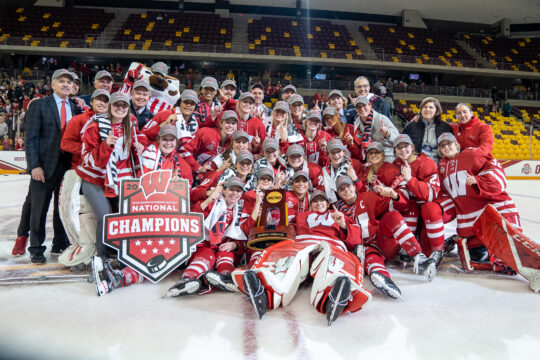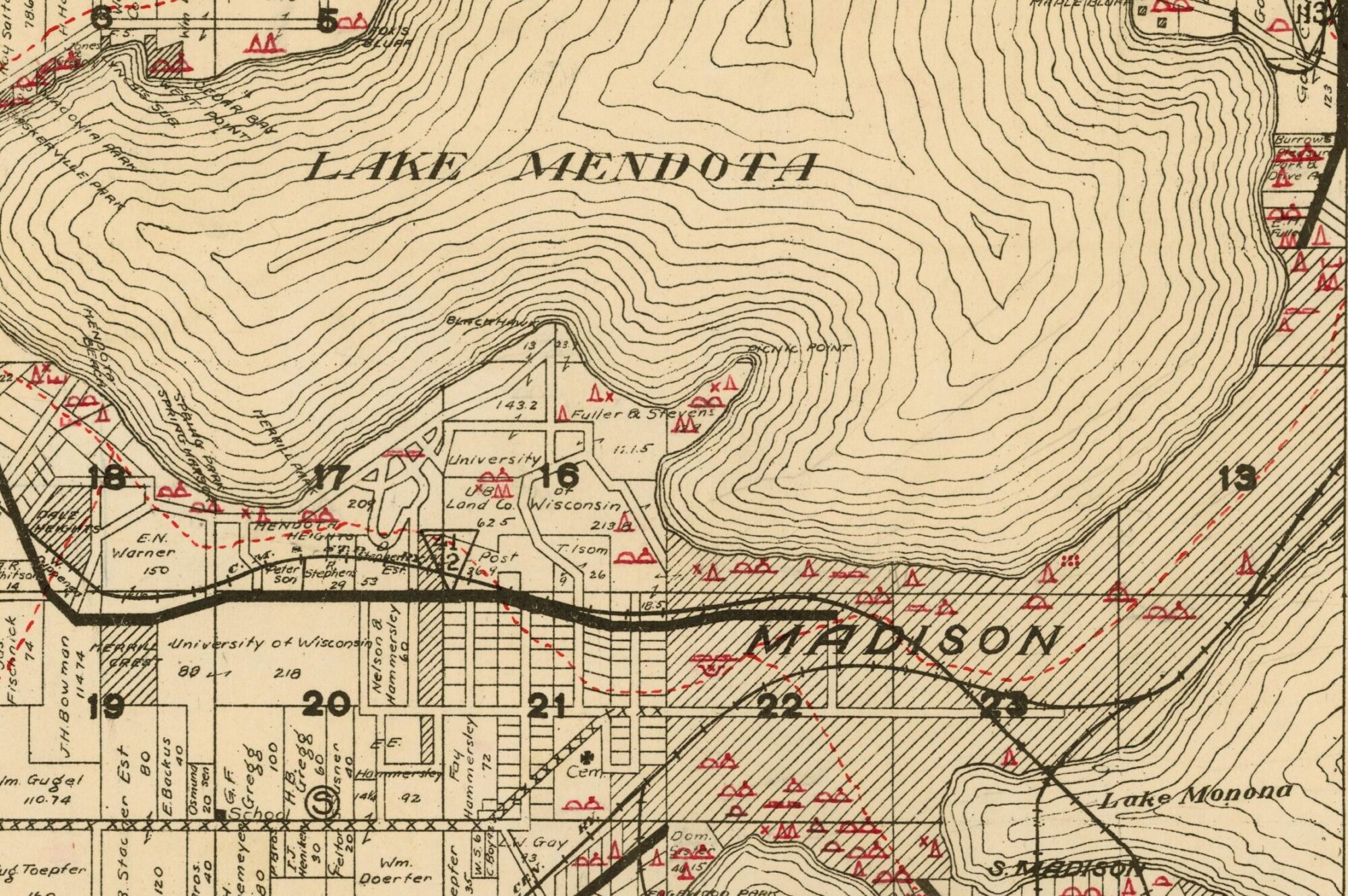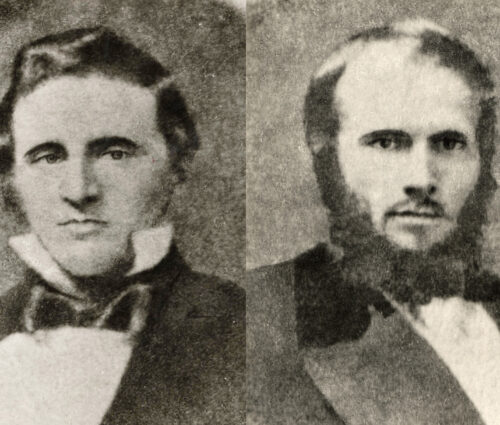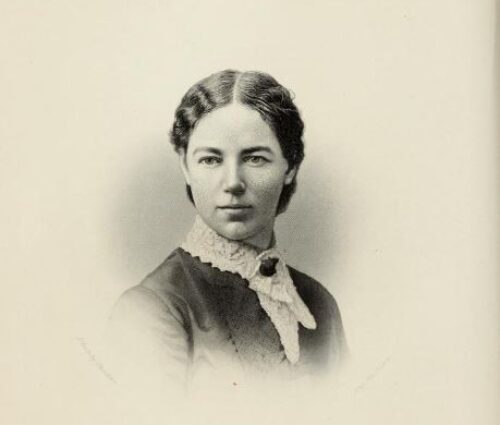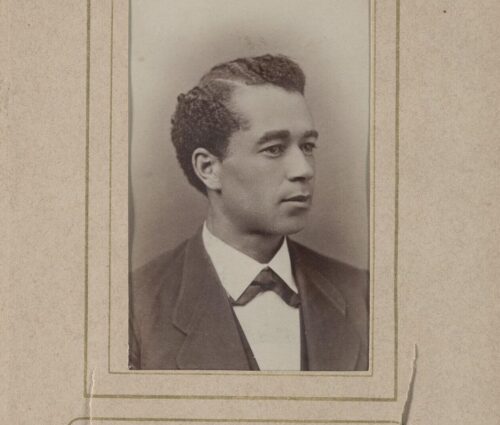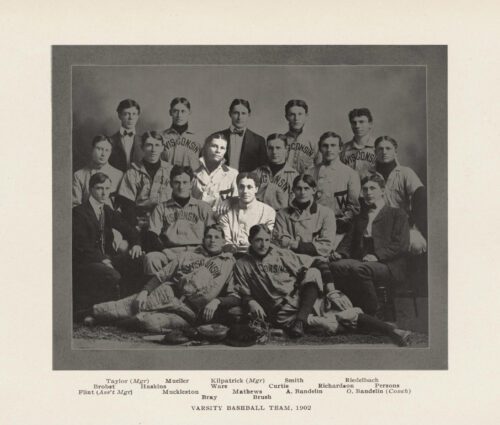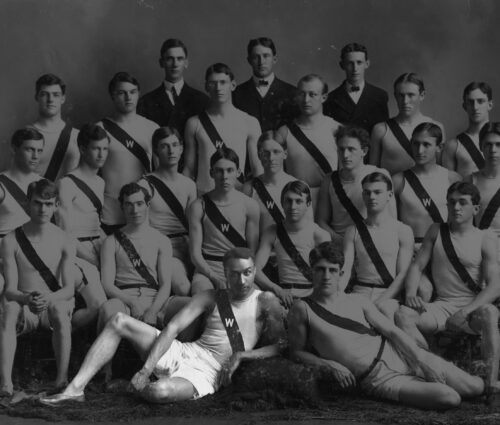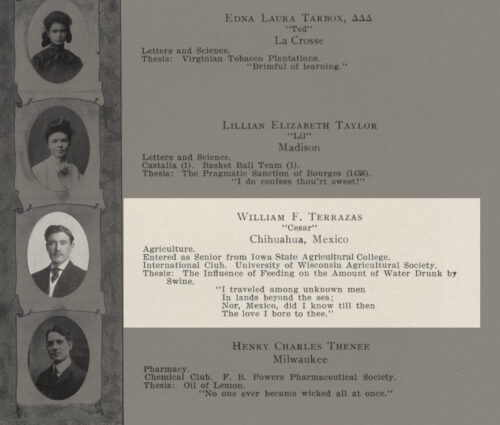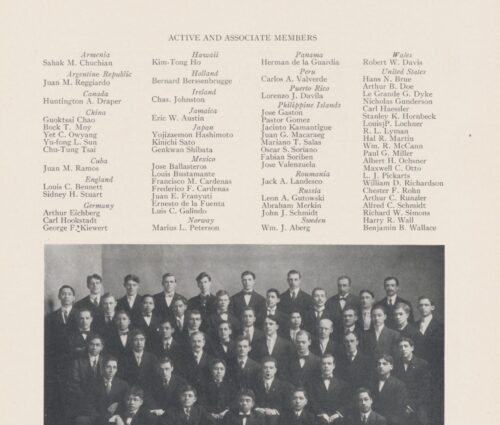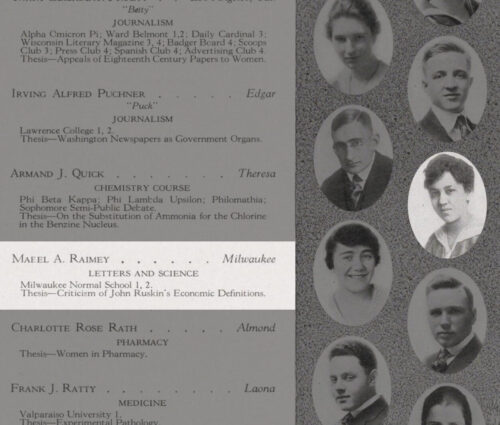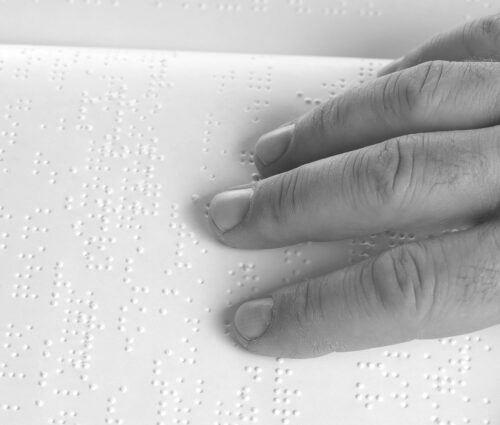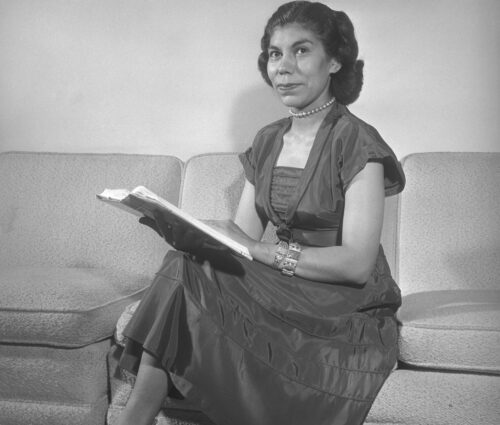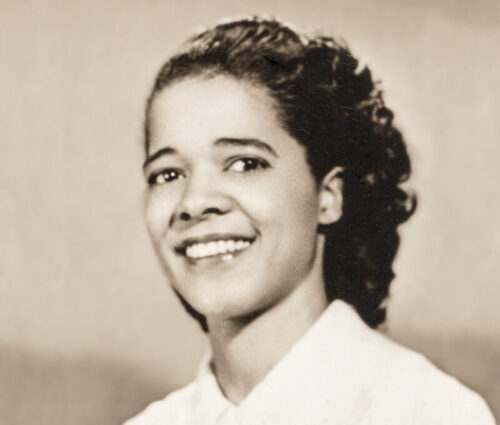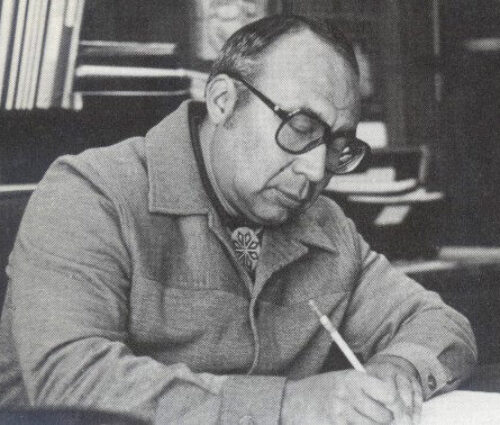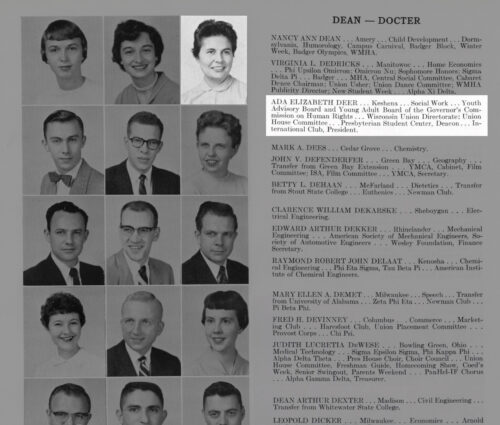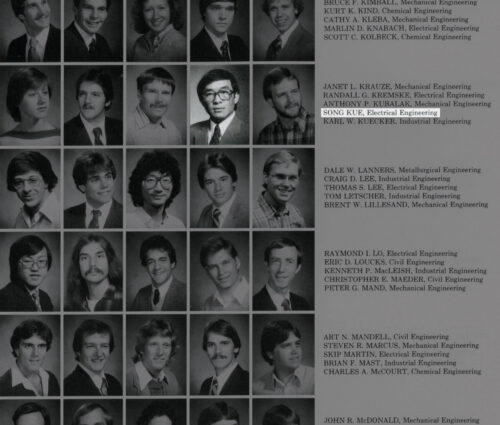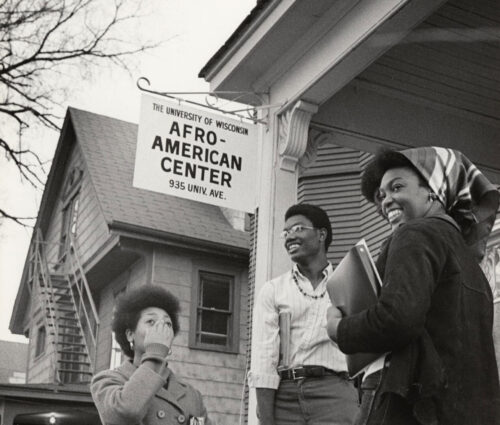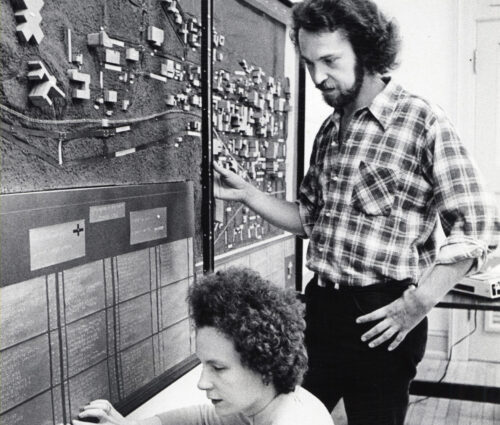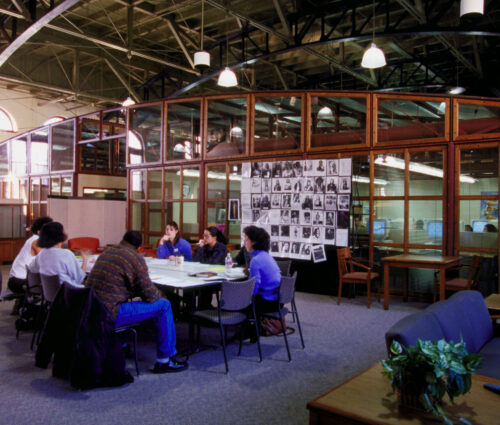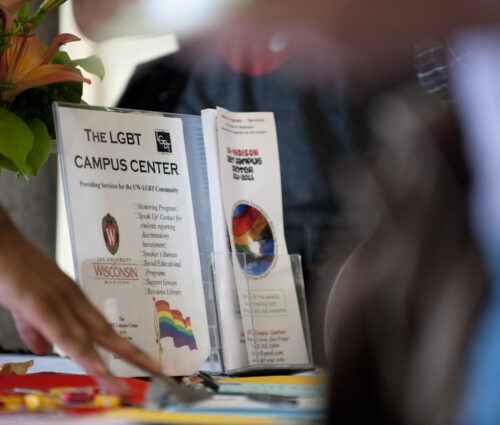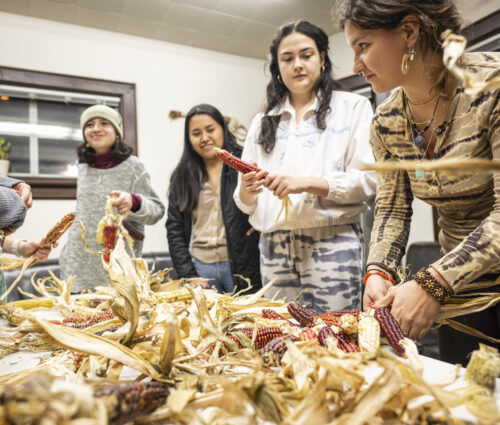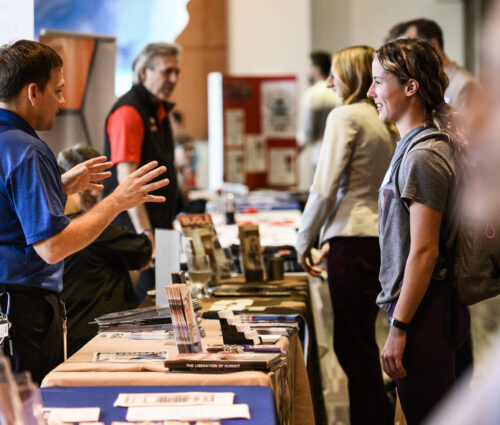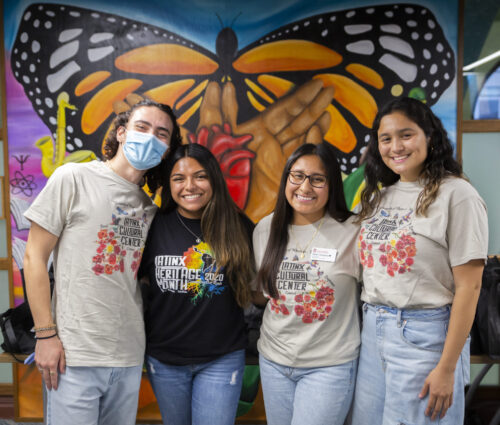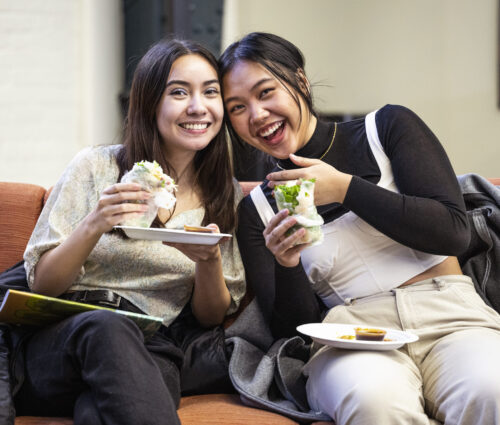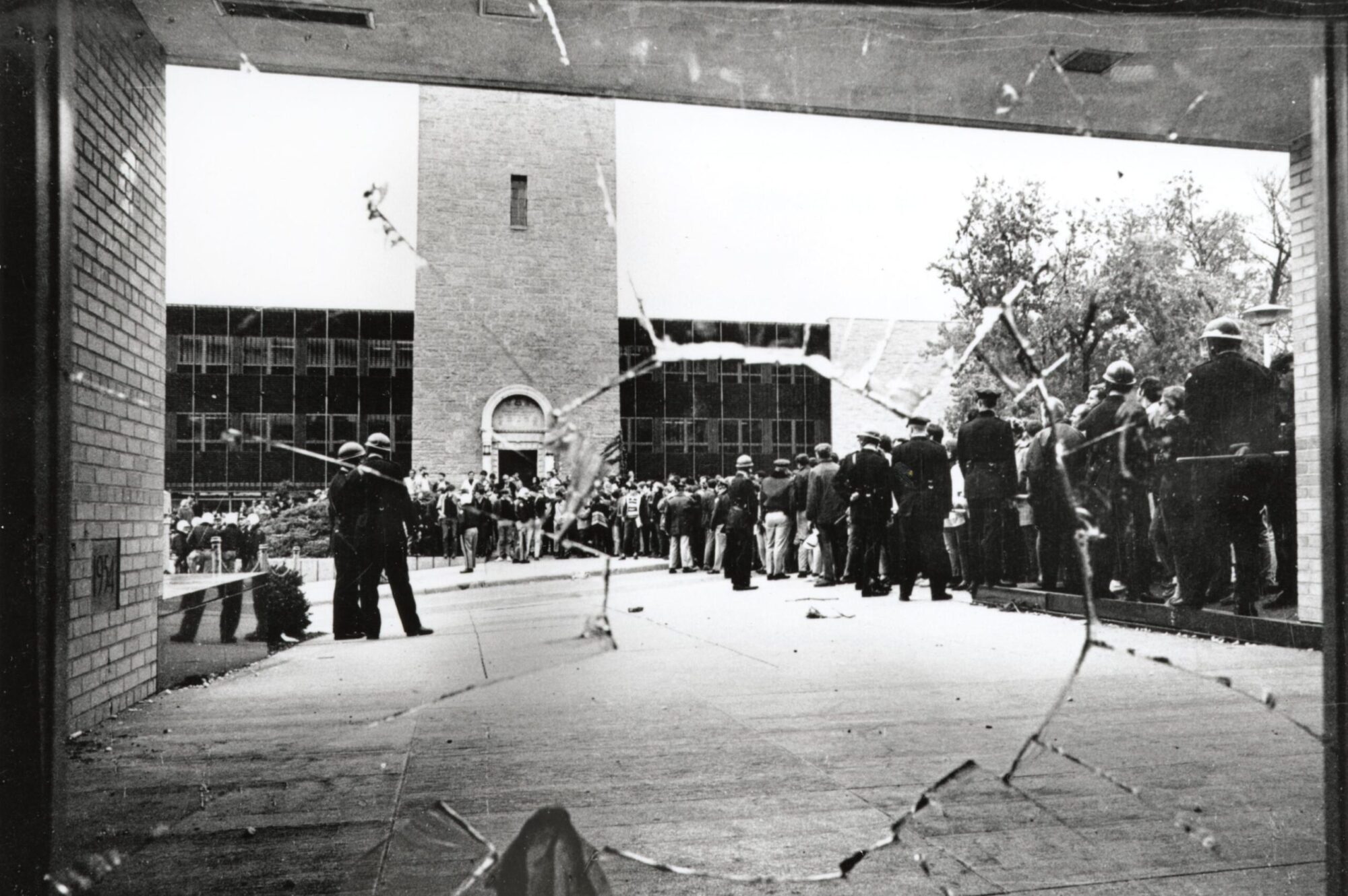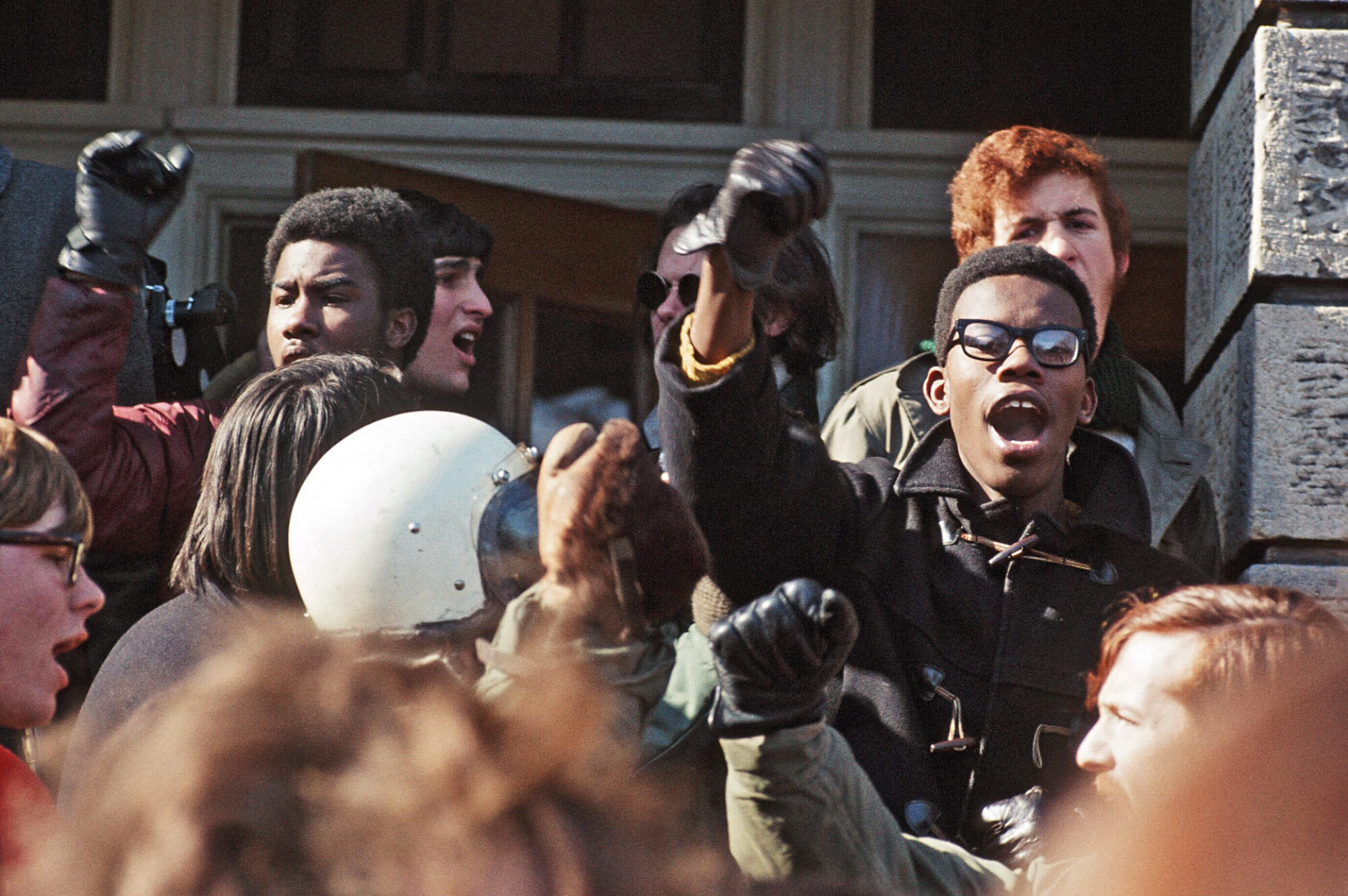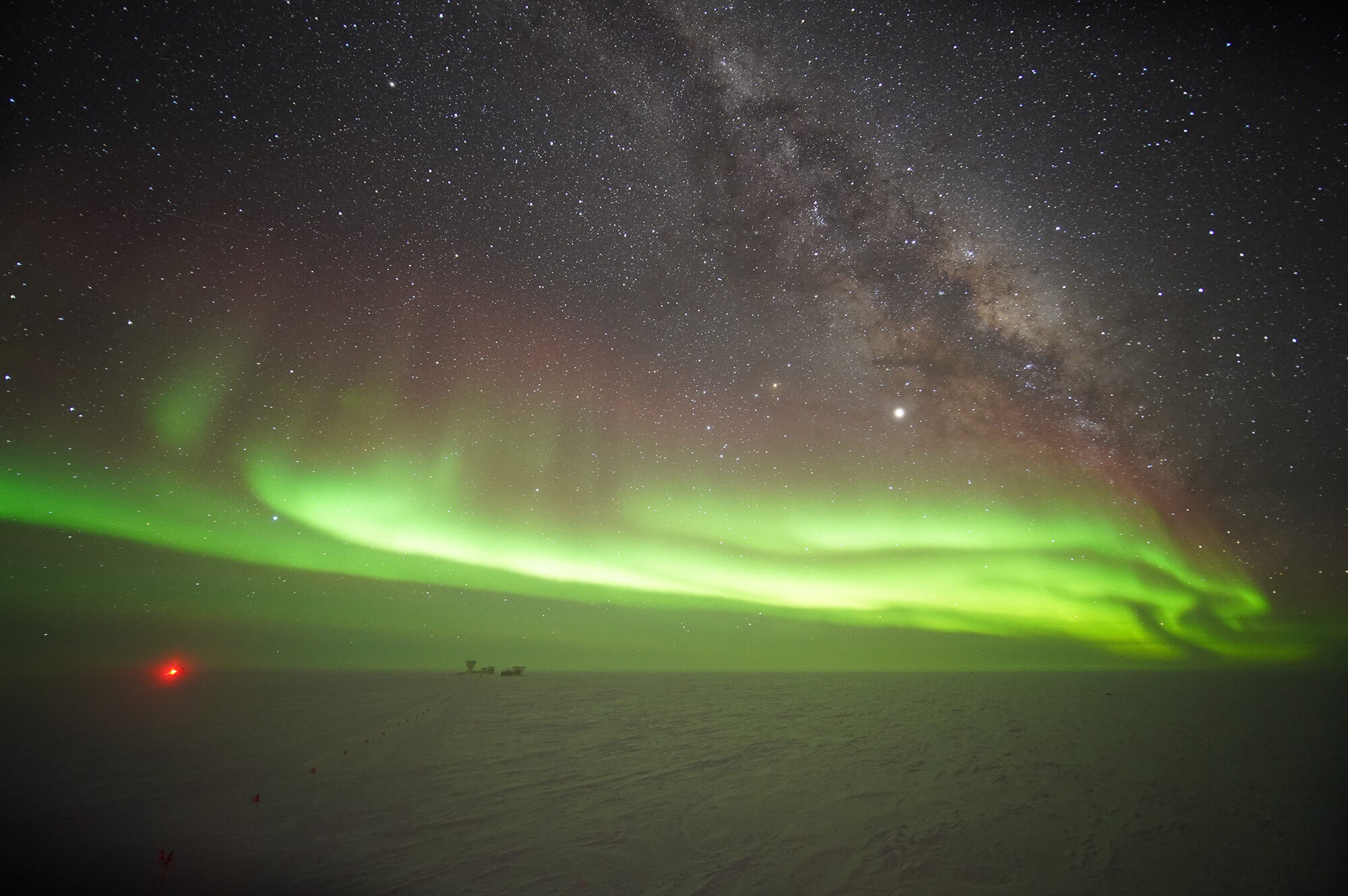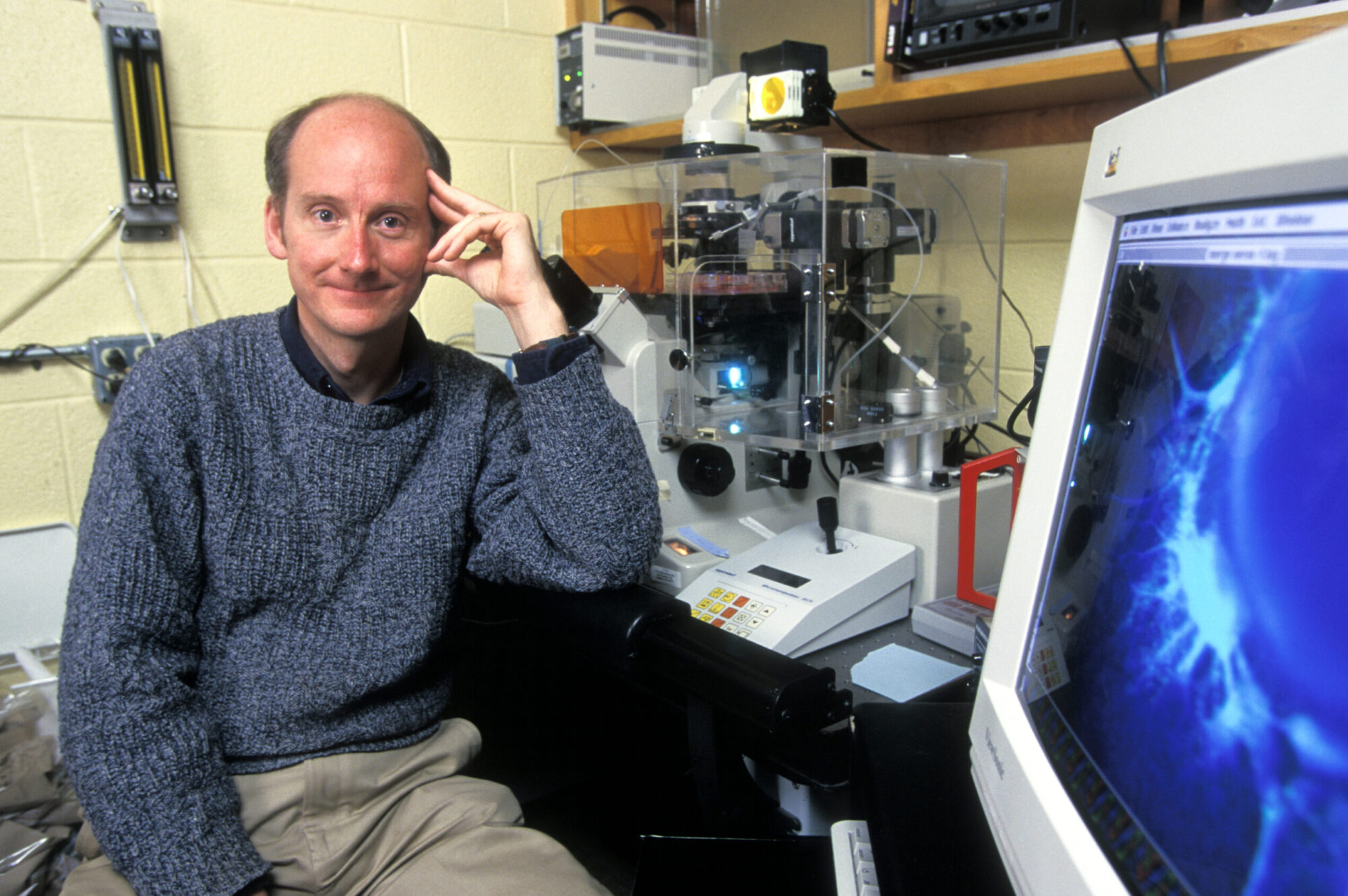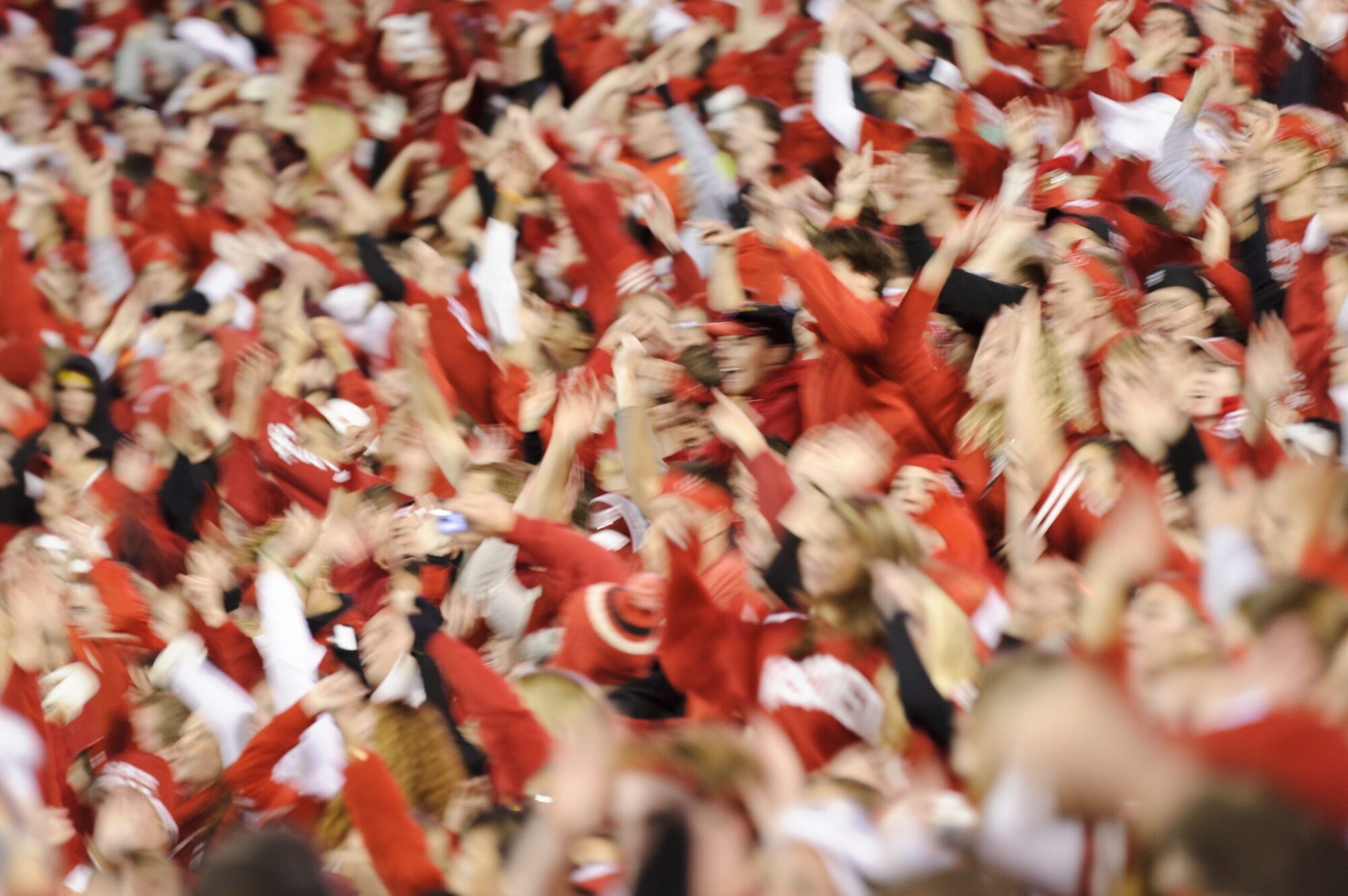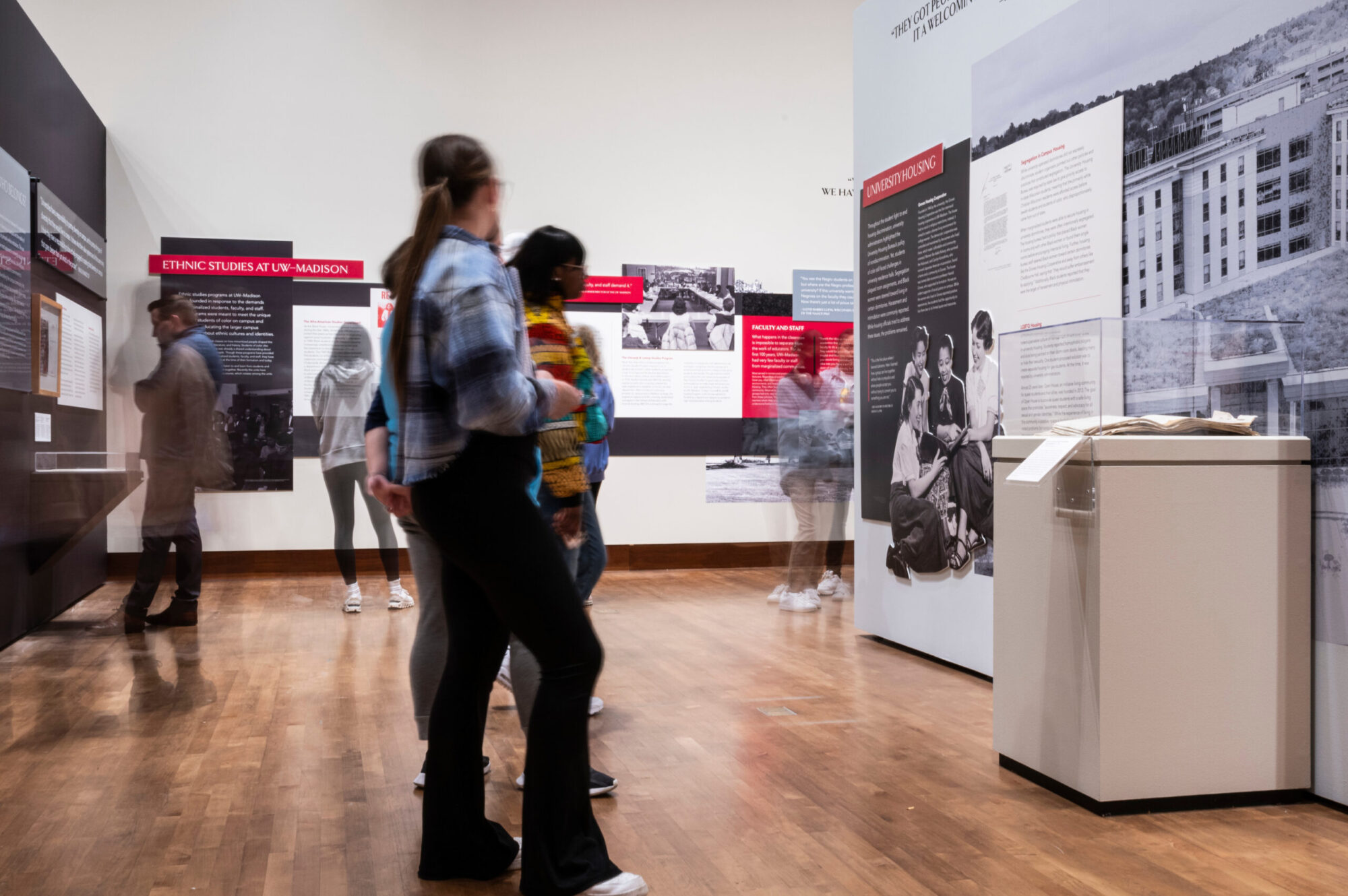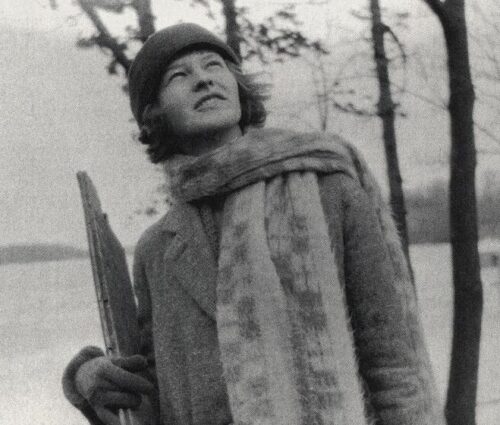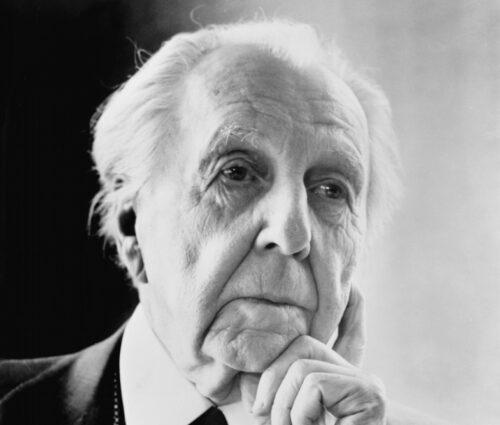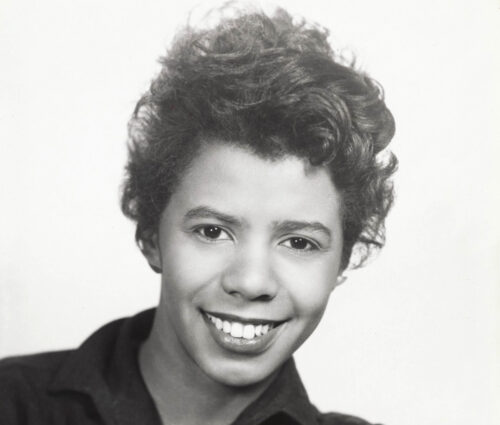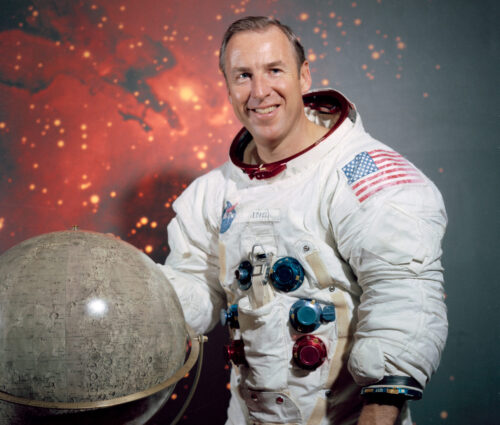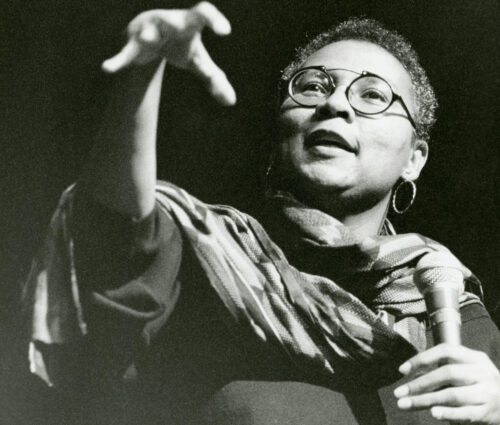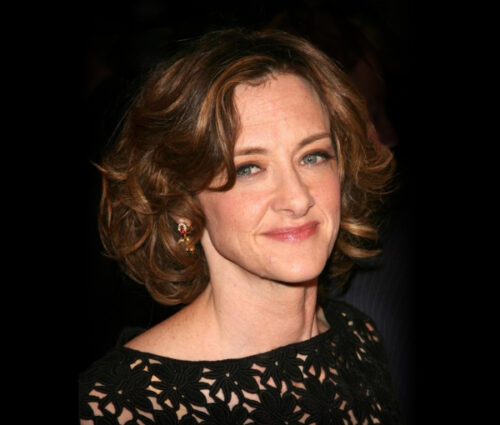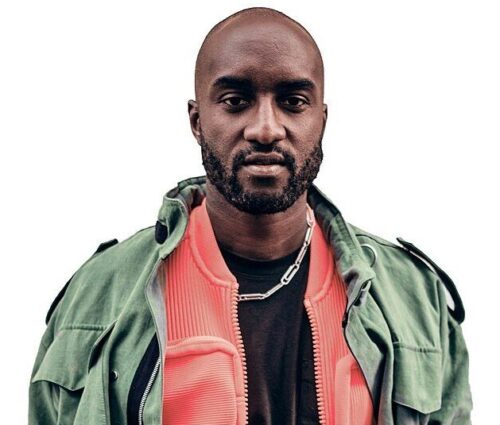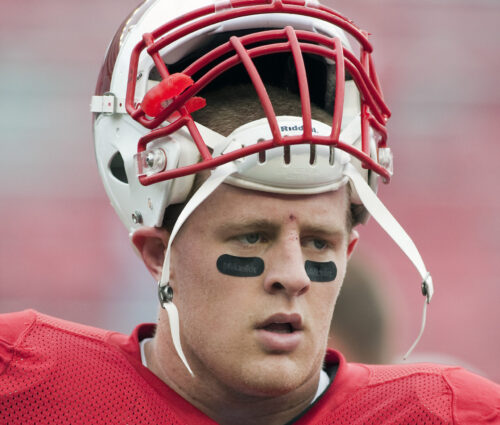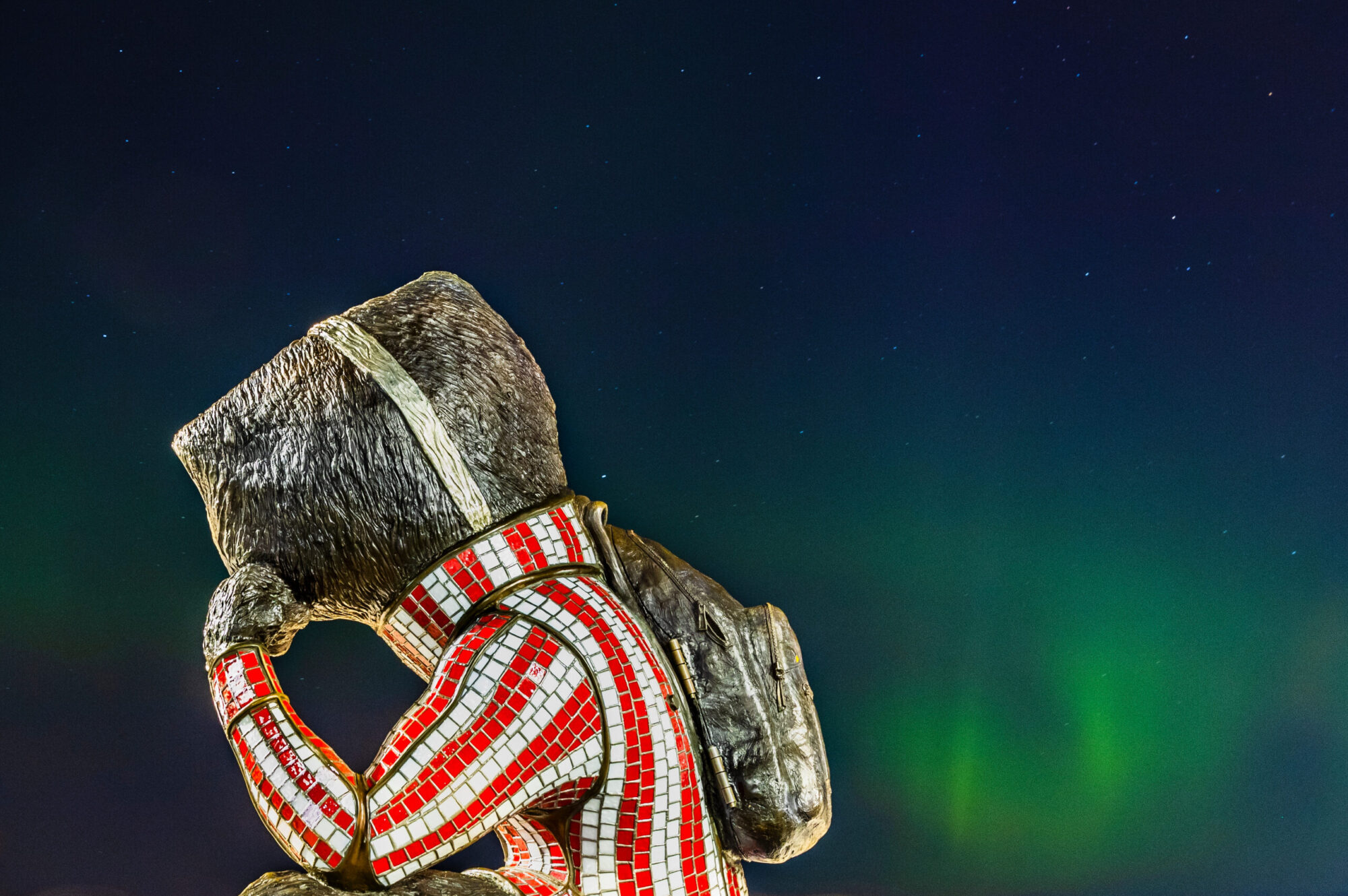UW–Madison at 175
An interactive timeline
Over the last 175 years, UW–Madison has made a profound impact on the world. Guided by the Wisconsin Idea, the university has made it a mission to push beyond the boundaries of campus through education, research, and public service. Because this is where an idea can change the world.
Explore by date range
1838–1900A foundation of academic freedom
-
1838 A UW at or near Madison
Even before statehood, Wisconsin’s leaders are eyeing its capital city as a future college town. The territorial legislature votes to establish a university of Wisconsin “at or near Madison, the seat of government.”
-
1848 Does a new state deserve a university? Dewey ever!
There’ve been Governor Nelsons and Governor Deweys, but only one Gov. Nelson Dewey. He is Wisconsin’s first, and one of our first governor’s first acts is to sign a law incorporating the University of Wisconsin and putting a board of regents in charge.
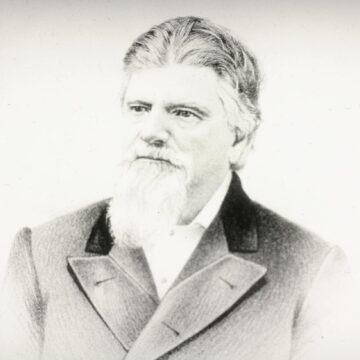 Governor Nelson Dewey
Governor Nelson Dewey -
1849 Class is in session
Professor John Sterling takes attendance for the first time in the UW’s temporary quarters near the capitol. The Wisconsin Alumni Association annually observes the date — Feb. 5 — as Founders’ Day. Subjects considered essential to a classical education (physics, civil polity, algebra, Latin) would soon be supplemented by courses in “useful arts” and “industrial pursuits.” More useful than civil polity? Yes, even in the earliest semesters, a healthy tension — which continues today and enriches the academic environment — exists between the merits of a liberal education versus practical skills.
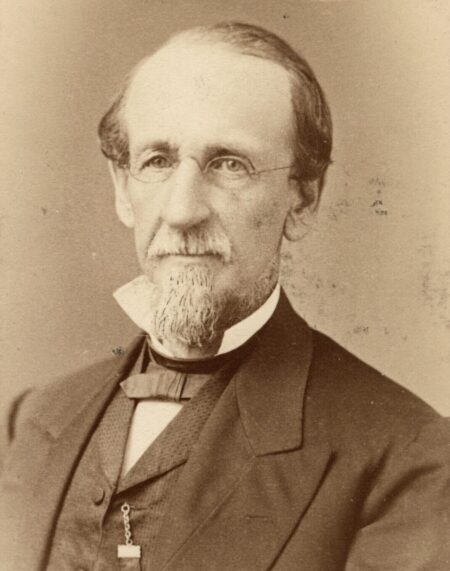 John Sterling
John Sterling -
1851 If you build it, they will climb
The first building on the present-day campus opens — way up there? North Hall’s siting atop College Hill makes total sense when all 56 students eat, sleep and study in one place. As the UW expands in enrollment and area, daily treks up the incline (now called Bascom Hill) become a badge of breathless honor.
Oldest and most mysterious buildings on campus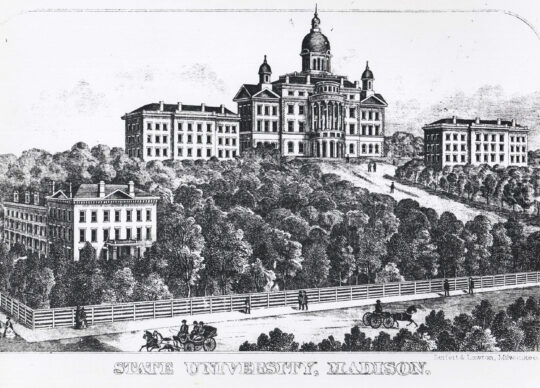
-
1861 Alumni answer the call
With the university facing budgetary pressures in the Civil War era, Charles Wakeley — the UW’s first (or second) alumnus as one-half of the graduating class of 1854 — helps form the Wisconsin Alumni Association to rally financial support for his alma mater. Today, WAA serves more than 475,000 living alumni around the world.
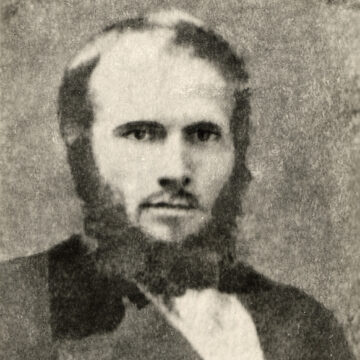 Charles Wakeley
Charles Wakeley -
1863 Women enter the UW as war opens a door
Not only does the Civil War drain the university of funds; it drains enrollment, as the all-male ranks of the student body march off campus and onto the battlefield. (Thirty-one UW students lost their lives fighting for the Union.) As a result, the UW begins to admit women — though not on an equal basis. President Paul Chadbourne resists granting female graduates the same degree as men until the Board of Regents overrules him. Later, in what we’ll call the Chad burn, one of his successors — E.A. Birge — names the university’s first women’s dormitory in “honor” of Chadbourne, noting that the former president’s “contumacy regarding coeducation should be punished.”
Influential Badger women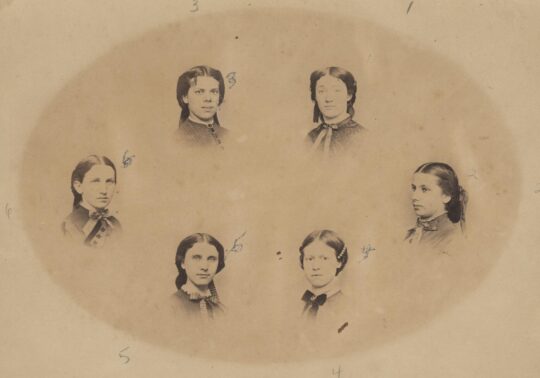 The UW’s first female graduates (1865): Mary Allen, Clara Chamberlain, Annie Chamberlain, Hettie Rusk, Annie Taylor and Lydia Sharp
The UW’s first female graduates (1865): Mary Allen, Clara Chamberlain, Annie Chamberlain, Hettie Rusk, Annie Taylor and Lydia Sharp
Student Firsts
Often in the face of adversity, these scholars earned their place at the UW — and opened the door for others to follow.
-
1875 How big is Scandinavian studies here? It’s hygge!
After a wave of Norwegian, Danish and Swedish settlement in Wisconsin, Rasmus Anderson — who dared question whether Columbus discovered America — starts the nation’s first Scandinavian studies program at the UW. Today, it boasts award-winning faculty and experts who can explain — and pronounce — hygge. (Gyggle it.)
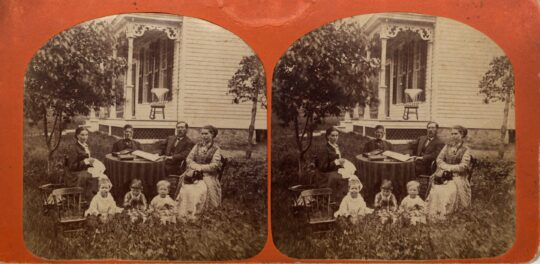 Rasmus Anderson (seated at table third from left) with family and visitors (image credit: Wisconsin Historical Society, WHI-27569)
Rasmus Anderson (seated at table third from left) with family and visitors (image credit: Wisconsin Historical Society, WHI-27569) -
1885 Studying in the sunshine? There’s a term for that.
Fourteen students attend the UW’s first summer session. The rest wait patiently for air conditioning to be invented. Today, thousands of students enroll in Summer Term each year, enjoying Madison’s lake breeze and shade trees while they (quiet, please) work on their degrees.
 A summer physical education class
A summer physical education class -
1886 School without a school, but not without influence
UW economist Richard Ely publishes the nation’s first book on labor relations. He and a cadre of colleagues become known as “The Wisconsin School,” and although it isn’t an actual school, the group’s innovative thinking leads to reforms such as workers’ compensation, unemployment insurance and the minimum wage.
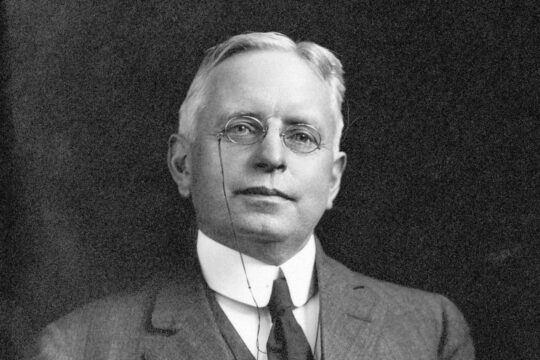 Richard Ely
Richard Ely -
1889 Picking a mascot is no miner matter
When Wisconsin fields its first football team, it needs a mascot. The UW goes with “Badgers” in a nod to the state’s nickname — which was not, it may surprise you to know, a reference to the animal but to the pre-statehood lead miners who burrowed into hillsides “like badgers” for shelter during the winter. To lead cheers, handlers make the regrettable choice to use a live badger that proved too vicious to control and had to be tackled on the Camp Randall sidelines more than once. The well-mannered Bucky Badger we know and love — all suit and no tackle — would come later.
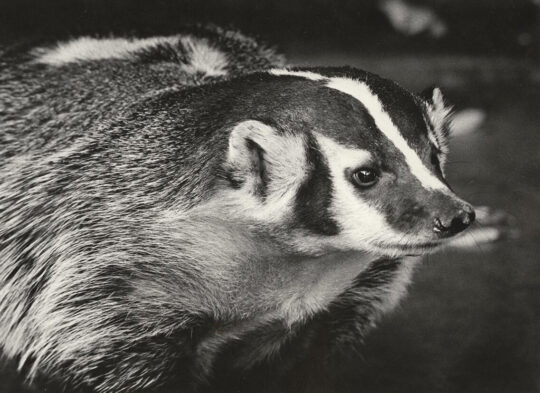
-
1890 A better test for butterfat
When you order your latte with skim, 1% or whole milk, you can thank Stephen Babcock that you know what you’re getting in that frothy foam. More important, in making dairymen honest by ending the common practice of farmers watering down milk, the UW professor’s invention of a practical way to conduct a “butterfat test” on dairy products is a boon to the state’s economy and helps make Wisconsin “America’s Dairyland.” Rather than patenting his invention for profit, Babcock shares it freely in the public interest — an early and enduring example of the UW’s tradition of applying research to benefit society.
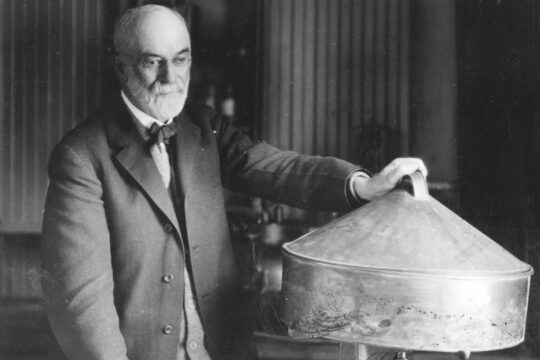 Stephen Babcock with a churning device
Stephen Babcock with a churning device -
1891 King, of soils, becomes king of silos
Nowadays, the word is used as a pejorative for narrow-minded thinking. But the humble silo — that ubiquitous, upright feature of the rural landscape in farm country — has much wider and deeper significance. And silos might have literally been much wider and deeper were it not for pioneering soil scientist Franklin H. King, a Wisconsin-born farm kid whose UW research proves that round, above-ground silos are the best way to store cattle feed — giving a boost to the emerging dairy industry.
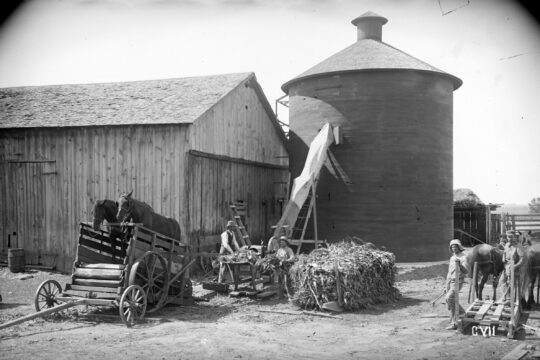 (Image credit: Wisconsin Historical Society, WHI-93309)
(Image credit: Wisconsin Historical Society, WHI-93309) -
1892 Cardinal rule: All the news that’s left to print
What’s black and white and cardinal all over? A newspaper, to paraphrase the old joke — in this case, the UW’s oldest student paper, the Daily Cardinal (“Cardinal” because cardinal red is the official school color; “Daily” because, well, duh). Publication begins innocuously with a front-page lead story about the winners of an oratory contest, but an anti-establishment streak soon becomes the Cardinal’s calling card. In the late 1960s, the left-leaning paper competes with the conservative upstart Badger Herald in a spirited editorial point/counterpoint when Madison was the only college town with two daily student newspapers.
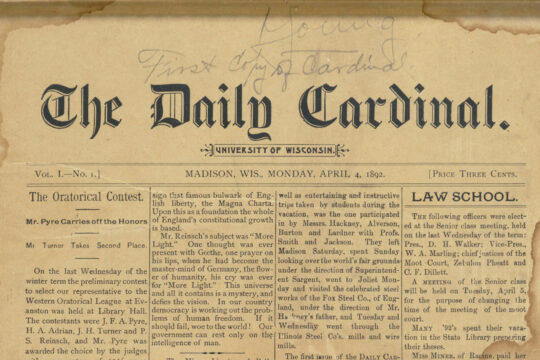
-
1894 Sifting & Winnowing starts — and never stops
The Board of Regents summons agricultural imagery to make a stirring statement in defense of a professor accused of teaching “pernicious” ideas: “Whatever may be the limitations which trammel inquiry elsewhere, we believe that the great State University of Wisconsin shall ever encourage that continual and fearless sifting and winnowing by which alone the truth may be found.” If all you remember from that pronouncement — which students and alumni found plaque-worthy enough to cast in bronze and mount at the entrance to Bascom Hall — is “sifting and winnowing,” you grasp the essence of academic freedom at the UW.
UW’s legacy and impact on academic freedom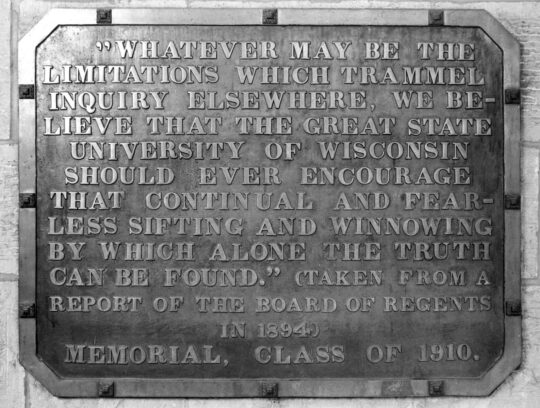
-
1898 “Praise to thee our a-vo-ca-do …”
“Varsity,” the arm-waving anthem at UW athletic events, is composed by a music instructor from an old hymn. It is originally named “Varsity Toast.” Can we please bring this back? Bucky Badger flinging toast á la “Rocky Horror”? We’re thinking no. But the band has been known to enter this “Time Warp” before.
“Varsity” lyrics
1901–1944The Wisconsin Idea turns reality
-
1905 An idea whose name will come
President Van Hise popularizes The Wisconsin Idea in a speech to state legislators and the assembled press — though he, himself, doesn’t use the now familiar label. In parlance befitting a bespectacled academic of the era, it was “the beneficent influence of the university” that Van Hise wanted to reach every family in the state. The idea behind The Idea predates Van Hise; his predecessor and former professor John Bascom was advocating for the UW to serve society years before, in exhortations to rapt audiences that included the likes of then-student, future statesman and Wisconsin Idea adherent “Fighting Bob” La Follette.
The Wisconsin Idea in action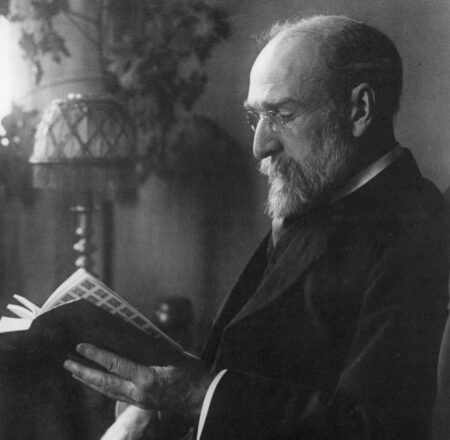 Charles Van Hise
Charles Van Hise -
1909 Well, ain’t that Purdy: “On, Wisconsin!” takes off
“On, Wisconsin!” is first performed as the UW’s fight song during the football team’s game against Minnesota at Camp Randall — which is ironic, because Chicago composer William Purdy had the future Golden Gophers in mind when he wrote the melody. Purdy planned to enter the song in a contest for the University of Minnesota, hoping to win a $100 prize. But his roommate, a UW alum named Carl Beck, “plunged right through that line” and all the lines, writing Wisconsin-centric lyrics. This convinces Purdy to make “Minn, Esota!” (or whatever it would have been) “On, Wisconsin!” instead.
UW’s beloved and controversial fight song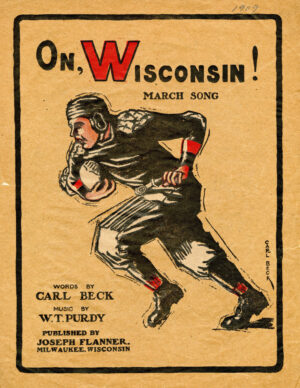
-
1909 New departments lead way in agricultural, wildlife research
The nation’s first Department of Agricultural Economics is founded here, followed soon by the first Department of Experimental Breeding (now Genetics), the first Department of Wildlife Management (headed by conservationist Aldo Leopold), and the advent of rural sociology as a fertile field for research.
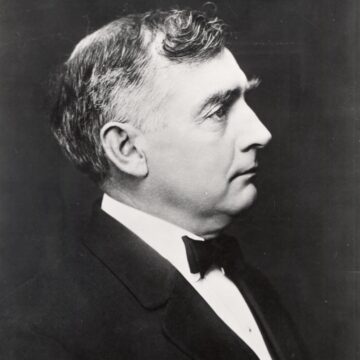 Charles Josiah Galpin, a trailblazing professor of agricultural economics
Charles Josiah Galpin, a trailblazing professor of agricultural economics -
1910 Win, lose or tossup? A custom with a catch
“No fee unless we catch our cane.” That seems to be the pitch as UW law students start an enduring tradition by throwing white canes over the North goalpost at the Homecoming football game in the belief that those who catch theirs will win their first case. Ladies and gentlemen of the jury, have you reached a verdict? We have, your honor. Toss the charges.
Origins of the cane toss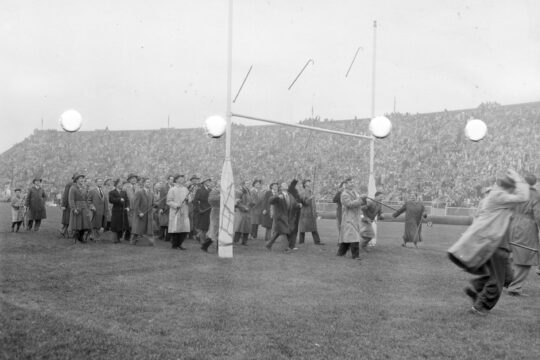
-
1913 Now you know your ABCs
Biochemists in the College of Agriculture identify Vitamin A as the thing in certain fats that makes animals consuming feed made from milk or eggs grow big and strong, while those with diets based on lard or olive oil become scrawny and sick. This and subsequent research at the UW, first on cattle and later on lab rats, help uncover an alphabet soup of vitamins — A, B, C, D and so on, ad infinitamin — ultimately improving human health by helping eliminate diseases that stemmed from vitamin deficiencies.
Birth of Vitamin A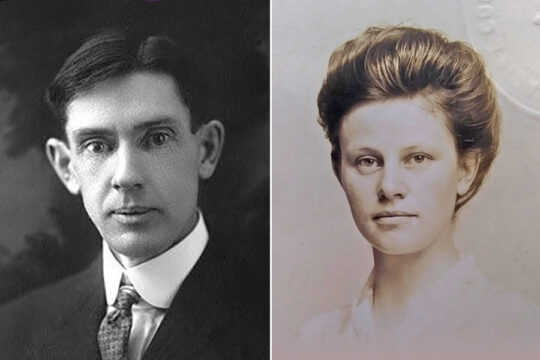 Elmer Vernon McCollum (left) and Marguerite Davis, lead researchers on vitamins
Elmer Vernon McCollum (left) and Marguerite Davis, lead researchers on vitamins -
1914 A milestone in treating speech and hearing
The UW opens the first university speech clinic in the U.S. and offers a curriculum in speech correction. Sara Stinchfield later receives the nation’s first PhD in what is now called communication sciences and disorders. Today, the UW Speech and Hearing Clinic helps people of all abilities communicate better.
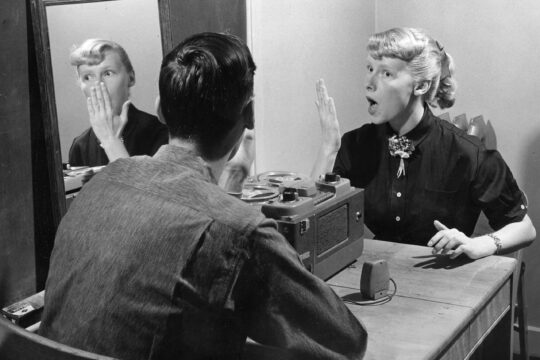
-
1917 Pioneering radio station airs weather, music
The forerunner of Wisconsin Public Radio — station 9XM — makes its first broadcast. Either the oldest, or one of the oldest, stations in the U.S. (depending on whom you ask, which plaque you read, and when you start the meter running), 9XM initially experiments with Morse code weather forecasts and music on phonograph records. By the 1920s, it has become WHA-AM and is transmitting farm information, educational programs and home economics into Wisconsin living rooms via the latest in mass communication technology. Folklore yarns soon follow as arts and culture enrich the mix on the “Wisconsin College of the Air.”
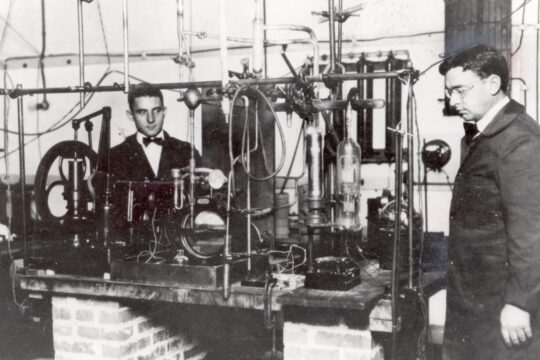 Professor Earle Terry (right) with student Malcom Hanson at radio station 9XM
Professor Earle Terry (right) with student Malcom Hanson at radio station 9XM -
1921 TB or not TB? That is the question. UW answers it.
The university helps farmers defeat the spread of a deadly disease among their cows by offering bovine tuberculosis tests. The UW also advances herd-control practices and laws requiring the pasteurization of raw milk, virtually eliminating the possibility of transmitting TB to humans.
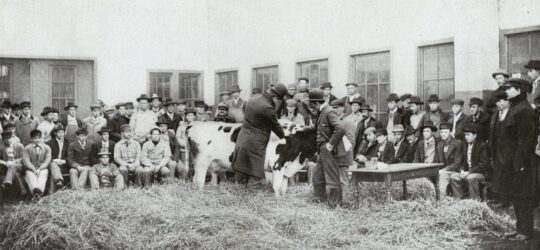 Testing a cow for tuberculosis at the UW’s Agricultural College
Testing a cow for tuberculosis at the UW’s Agricultural College
-
1922 Radio in the classroom? Radio is the classroom.
Remote learning, distance instruction — whatever you want to call it, it didn’t begin during the pandemic. It dates back to the horse-and-buggy days, and takes a giant leap forward in the 1920s when UW professor Edgar “Pop” Gordon conducts the first music class ever offered over the airwaves. Many schools at the time cannot afford their own music teachers, and Gordon’s WHA radio broadcasts — which also feature fellow instructors such as Fannie Steve and Ranger Mac — eventually reach 325,000 children. Tip your hat when you pop the top on a cold drink at Gordon Dining and Event Center, which is named for the sing-along professor.
UW pioneers distance education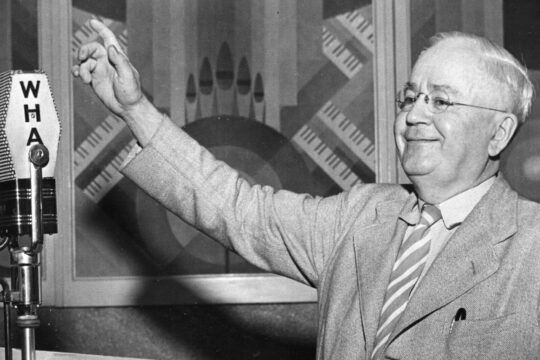 Edgar “Pop” Gordon
Edgar “Pop” Gordon -
1923 Shining a light, finding a cure, funding discovery
The scourge of rickets meets its match in Harry Steenbock, a UW professor of biochemistry. Building on previous knowledge that sunlight could cure the widespread bone disease, which mostly affects children, Steenbock discovers how to achieve the same result by shining ultraviolet light on food and drugs to amp up their vitamin D content. Steenbock — who believed that patenting his invention should benefit people, not make him rich — helps form the Wisconsin Alumni Research Foundation (WARF) to invest the revenue from commercializing this and future innovations and use the proceeds to fund further UW research.
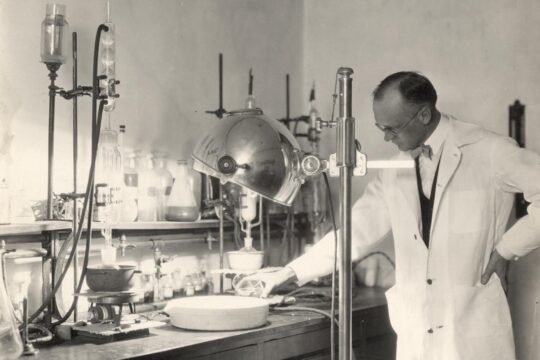 Harry Steenbock in his lab
Harry Steenbock in his lab -
1924 A hospital’s first home
Wisconsin General Hospital opens at 1300 University Ave. The name remains over the entrance to what today is the Medical Sciences Center, but “Wisconsin General” is now “University Hospital.” Relocated in the 1970s to Highland Avenue, it anchors UW Health, a system with seven hospitals and more than 80 clinics.
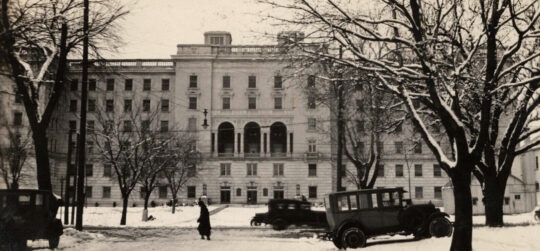
-
1926 Doubling down on dance
Under the direction of the gracefully athletic Margaret H’Doubler, a 1910 graduate who went on to teach physical education and coach basketball here, Wisconsin begins the nation’s first college dance program. To make the dance major “worth a college woman’s time,” H’Doubler leads students beyond the mere study and practice of movement and incorporates multidisciplinary elements as diverse as philosophy and art history into the curriculum. Despite the huffing of stuffy academics with bushy mustaches, H’Doubler’s methods have a profound influence — shaping the world of modern dance and dance education.
H’Doubler shapes foundation of modern dance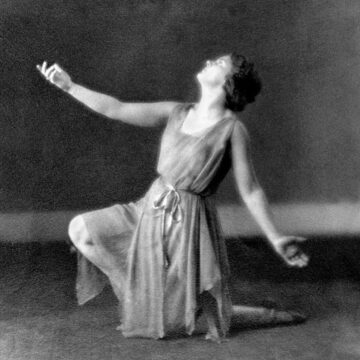 Margaret H’Doubler
Margaret H’Doubler -
1926 Carson Gulley: The man; the center; the pie
Carson Gulley is hired as a chef to serve students living in the new Tripp and Adams residence halls. He endears himself to campus dessert-lovers for generations to come by introducing University Housing’s legendary fudge-bottom pie, which still bears his name. Gulley becomes the first African American to host a TV show in Wisconsin — airing “What’s Cookin’” in the 1950s with his wife and catering partner, Beatrice. Gulley’s success comes in spite of the housing and professional discrimination he faced in Madison. The former Van Hise Refectory, where he started his UW career, is named Carson Gulley Center in his honor.
Carson Gulley Cookbook Collection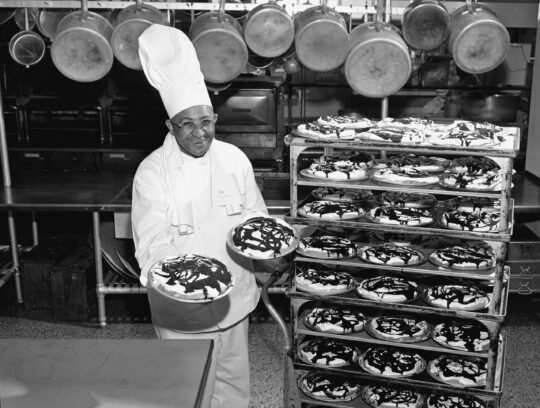 Carson Gulley holding fudge-bottom pies in 1953 (image credit: Wisconsin Historical Society, WHI-130567)
Carson Gulley holding fudge-bottom pies in 1953 (image credit: Wisconsin Historical Society, WHI-130567) -
1928 Campus gets a ‘living room’ with Memorial Union
Memorial Union opens as a gathering place for students, faculty and alumni. An important person making a solemn speech dubs it “the campus’s living room,” but it does a pretty good impersonation of the kitchen, dinette and rec room as well. Dedicated to the UW’s war veterans, it becomes the first college union to offer a craft shop; the first to serve beer after Prohibition ends; and the first with a cultural center when the theater wing is added. And of course, there’s the Terrace — unmatched anywhere for the laid-back lakeside vibe that flows from its waterfront views, collegial conversations and rich traditions.
Timeline of the Memorial Union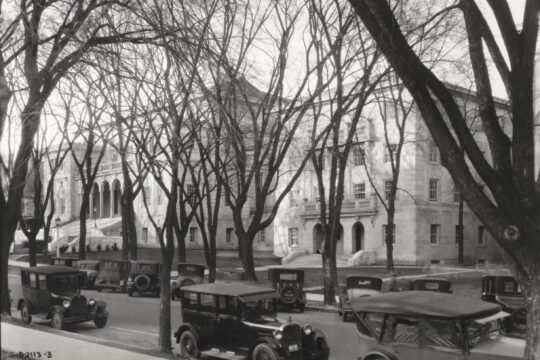 The Memorial Union before its opening
The Memorial Union before its opening -
1928 New technique strikes a blow against infections
Professors W.H. Peterson and M.J. Johnson develop fermentation techniques that pave the way for large-scale antibiotics production. The widespread use of penicillin during World War II, when Allied troops were commonly injected to treat life-threatening infections, would not have been possible without the work of these and other UW biochemists. Their methods are eventually applied more widely throughout academia, health care and the pharmaceutical industry — saving countless lives worldwide. Descendants of the penicillium mold developed at the UW remain in use today.
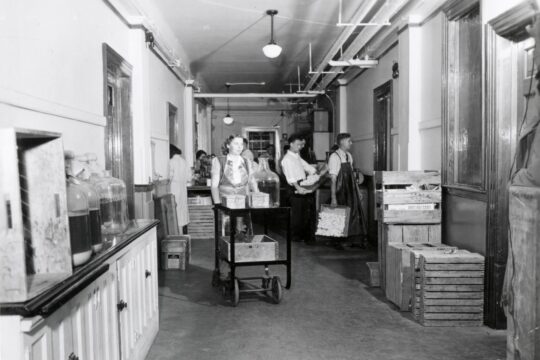 A penicillin research lab at the UW
A penicillin research lab at the UW -
1932 Tops in crops: Farmers reap what research sowed
Before hybrid cars and hybrid bikes, when you heard the h-word in Wisconsin the topic was probably corn. The UW’s release of the state’s first hybrid corn strain — adapted for cooler, shorter growing seasons — dramatically boosts production. Future research leads to similar gains for cranberries and other crops.
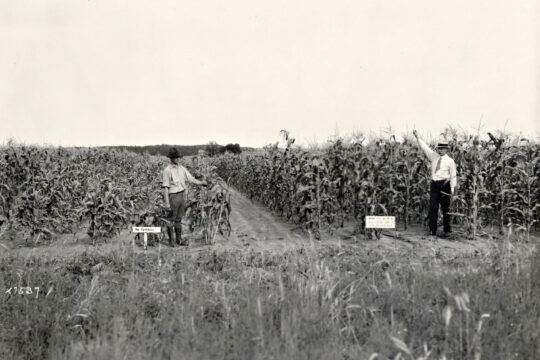 UW Hancock Agricultural Research Station
UW Hancock Agricultural Research Station -
1935 The New Deal adopts a Wisconsin idea
In perhaps the most far-reaching public policy application of the Wisconsin Idea, economic theories that originated here are put into effect during the Great Depression with passage of the Social Security Act. President Franklin D. Roosevelt taps UW professor Edwin Witte to draft the landmark legislation, building on the work of earlier Wisconsin scholars such as John Commons showing how government could improve the welfare of working people. It is part of a UW social reform legacy that also provided the basis to rewrite labor laws, establish unemployment insurance and enact antitrust protections.
The Wisconsin Idea influences Social Security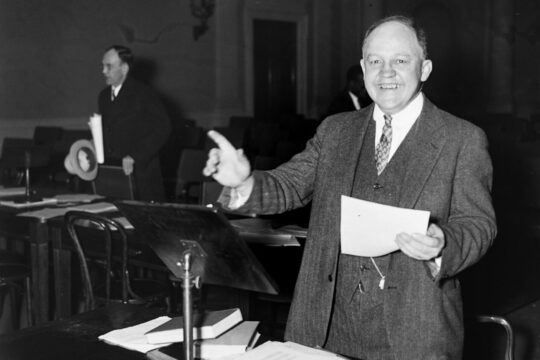 Edwin Witte (right) holds a social security proposal in the U.S. House of Representatives in 1935.
Edwin Witte (right) holds a social security proposal in the U.S. House of Representatives in 1935. -
1936 Painting the town (and country)
John Steuart Curry — a muralist whose sweeping landscapes and dramatic scenes of determined Midwesterners capture the mood of the region — becomes the UW’s artist-in-residence, the first at an American university. Based in the College of Agriculture, he travels the Wisconsin countryside to teach and promote art.
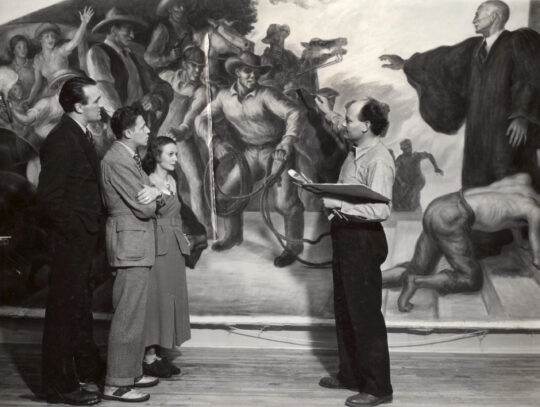 John Steuart Curry (right) in front of his mural
John Steuart Curry (right) in front of his mural -
1937 Another first in vitamin research
Conrad Elvehjem, who two decades later would become the university’s president, makes his early mark as a scientist by leading UW biochemistry researchers in the discovery of niacin (a B vitamin) as a cure for pellagra — an often-fatal disease that was once a major health concern in the U.S., killing thousands every year.
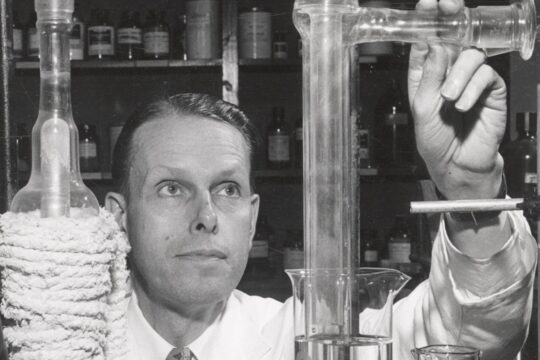 Conrad Elvehjem in his lab
Conrad Elvehjem in his lab -
1938 Precision answer for a common cancer
“Mohs surgery” — a technique to treat skin cancer still in widespread use today — is pioneered by UW physician Frederic Mohs. By dissecting tumors and examining them microscopically during surgery, the procedure leaves more healthy tissue in place and reduces scarring after cancerous cells are removed.
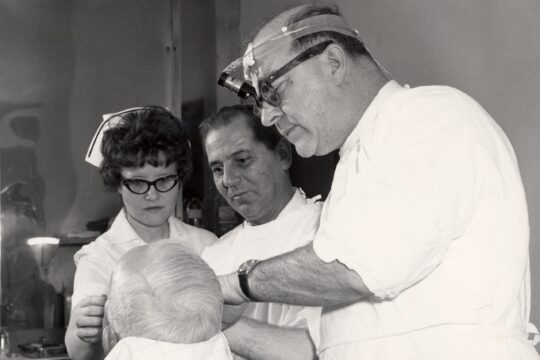 Frederic Mohs (right) tends to a patient.
Frederic Mohs (right) tends to a patient. -
1939 Seasoned experts agree: Pass the salt
More than 20 years after chemists here discover a link between iodine deficiency and goiter (an irregular growth of the thyroid gland), they figure out how to ensure people get enough iodine in their diets: put a little in our table salt. If it says “iodized” on the label, that’s UW research saving your neck.
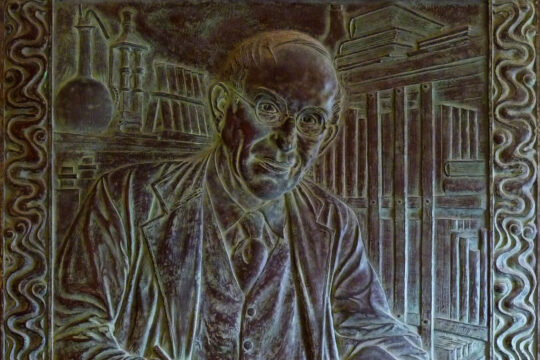 A plaque honoring Edwin B. Hart, a UW researcher who helped to develop a process that stabilized iodine in table salt
A plaque honoring Edwin B. Hart, a UW researcher who helped to develop a process that stabilized iodine in table salt -
1939 Union Theater opens doors, breaks barriers
The premiere of “The Taming of the Shrew” opens the season at Memorial Union’s new theater. The venue welcomes African American artists at a time when they are still barred from performing on many American stages. Opera singer Marian Anderson caps the Union Theater’s first year, not long after the Daughters of the American Revolution refuse to allow her to perform at Constitution Hall in Washington, D.C. Other Black artists the Union sponsors include Paul Robeson, Harry Belafonte, Louis Armstrong, Duke Ellington and Ella Fitzgerald.
Photos from memorable Union Theater concerts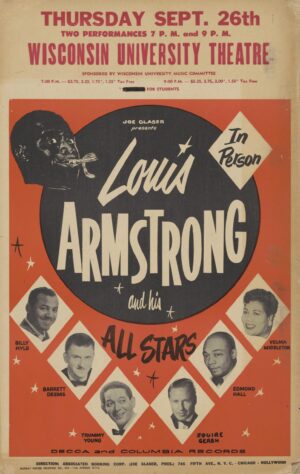
-
1939 A seminal moment in the history of breeding
Grad student Henry Lardy and his professor spawn an insemination revolution by developing a practical way for farmers to preserve and store bull semen using readily available egg yolks. This makes it easier — and quite profitable — to breed more productive beef and dairy cattle.
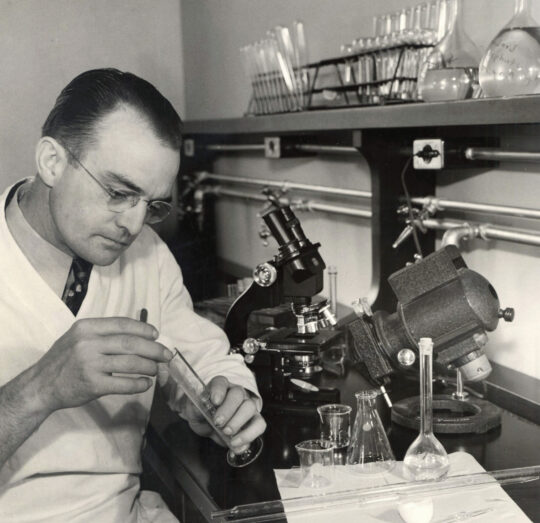 Biochemistry professor Paul Phillips, who advised Henry Lardy in his lab
Biochemistry professor Paul Phillips, who advised Henry Lardy in his lab -
1939 Putting the ‘college’ in ecology
Faculty member Aldo Leopold founds the forerunner of UW’s Department of Wildlife Ecology — the nation’s first. He was also the Arboretum’s first research director, associate director of the U.S. Forest Products Lab on campus, and author of the conservation classic “A Sand County Almanac” — a lyrical expression of his land ethic that informs and inspires environmentalists to this day. “A thing is right,” Leopold wrote, “when it tends to preserve the integrity, stability and beauty of the biotic community. It is wrong when it tends otherwise.” A student residence hall with a sustainability theme is named in his honor.
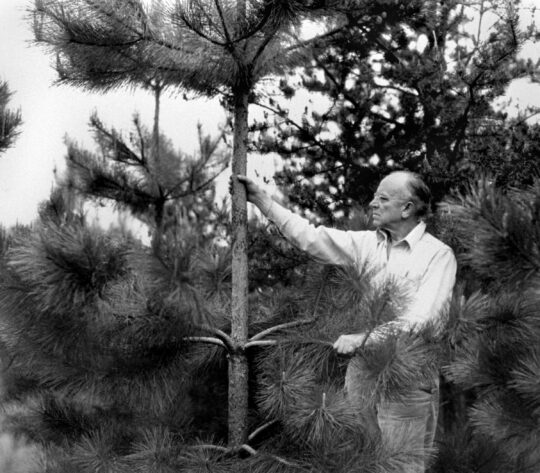 Aldo Leopold
Aldo Leopold -
1940 IDK about Idaho, but Wisconsin’s niche is chips
UW researchers develop high-quality, disease-resistant potato crops on the North American continent’s first potato seed farm of its kind. The state becomes a spud-producing stud, consistently ranking in the nation’s top five. The hardy Snowden variety is especially well-suited for making potato chips.
Potato variety research continues today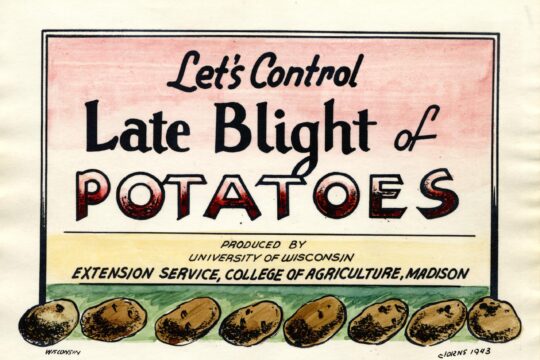 A 1943 UW Extension advertisement
A 1943 UW Extension advertisement -
1940 A generous bequest boosts basic science
A financial gift from Michael W. McArdle, a prominent industrialist and attorney, enables construction of the McArdle Laboratory for Cancer Research on the UW campus. McArdle scientists make steady progress in understanding and fighting the disease, with their basic experiments and historic discoveries leading to better cancer treatments and earning worldwide acclaim. The lab’s functions are moved into larger, more modern facilities when the National Cancer Institute funds construction of the present McArdle building in the 1960s.
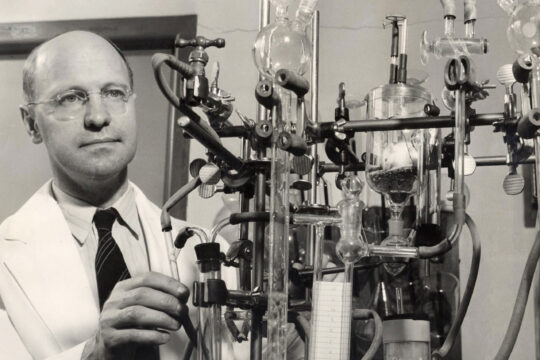 Dr. Harold Rusch, the first director of the McArdle Laboratory
Dr. Harold Rusch, the first director of the McArdle Laboratory -
1940 The Link between dying cows and preventing clots
Karl Paul Link discovers how a substance responsible for killing cows can be synthesized to save human lives. He finds that an anticoagulant present in the clover a dairy farmer’s herd was feeding on — and dying from — forms a good basis for developing drugs to prevent blood clots. It takes six years of picking through bales of rotten clover hay to find the right combination for warfarin (named for WARF, the Wisconsin Alumni Research Foundation), which becomes the most-prescribed blood thinner in the world (and even helps save President Dwight Eisenhower’s life after a heart attack). In one of research’s all-time leading twofers, warfarin also turns out to be a highly effective rat poison.
New standard for safe, reliable blood thinner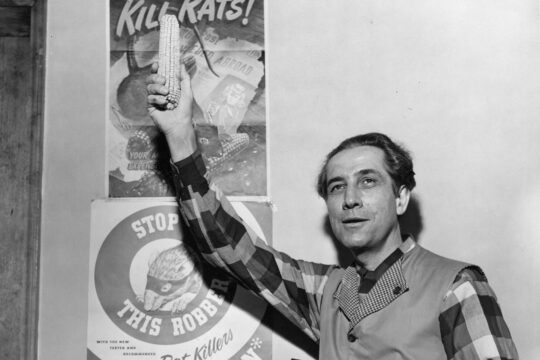 Karl Paul Link in front of a poster advertising his Warfarin discovery
Karl Paul Link in front of a poster advertising his Warfarin discovery -
1944 Living together ‘without hate or prejudice’
At a time when housing discrimination is common in Madison, the UW opens its first interracial housing cooperative to provide a diverse living environment for female students. Groves Housing Cooperative, named for economics professor and social justice advocate Harold Groves, has no restrictions based on race or religion; its residents include survivors of the Holocaust and the Japanese American incarceration. “This is the first place where I learned tolerance,” one of them said. “Here I learned how a group can live together without hate or prejudice and where people accept you without trying to convert you.”
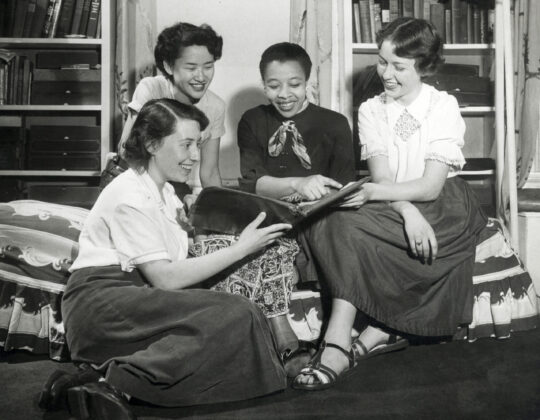 Student residents of Groves Housing Cooperative in 1951 (from left to right: Adela Kalvary, Carolyn Konoshima, Marie Cochrane Gadsden, Clarice Wruck)
Student residents of Groves Housing Cooperative in 1951 (from left to right: Adela Kalvary, Carolyn Konoshima, Marie Cochrane Gadsden, Clarice Wruck)
1945–1979From a postwar boom to a cultural flashpoint
-
1947 A Nobel calling: Seeking bacteria’s secrets
Joshua Lederberg, the UW faculty’s first Nobel Prize winner, arrives on campus to study the intimate lives of bacteria. Initially focused on how bacteria reproduce sexually, he goes on to explore and explain why they are able to become antibiotic-resistant.
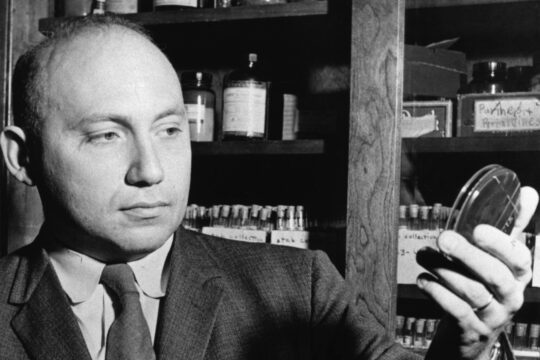 Joshua Lederberg
Joshua Lederberg -
1947 Control+Alt+Invent
Invention of the transistor and the integrated circuit by two UW alumni fuels America’s postwar technological revolution and helps usher in the computer age. For his transistor, electrical and computer engineering graduate John Bardeen goes on to win the second Nobel Prize by a UW grad (there are 19 today). Later — still not done changing the world — Bardeen becomes the first two-time Nobel laureate in science for his work in superconductivity. Fellow ECE grad Jack St. Clair Kilby’s integrated circuit, to this day, makes daily life easier for virtually anyone using a computer, driving a car or operating an electronic device.
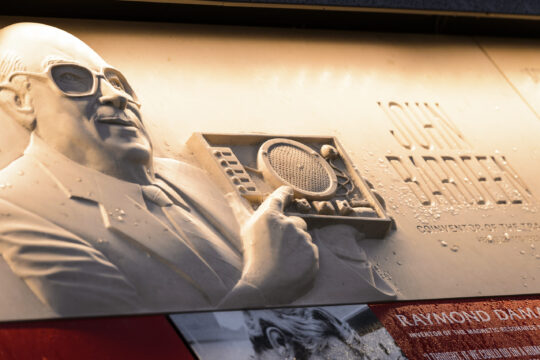 A tribute to John Bardeen at Alumni Park
A tribute to John Bardeen at Alumni Park -
1950s Center’s namesake takes aim at disability, disease
Pediatrician Harry Waisman identifies a way to combat a condition that causes intellectual disabilities in infants unable to metabolize essential proteins. His work leads to mandatory screening at birth for phenylketonuria (PKU) — first in Wisconsin and, later, nationally. After his death, the UW’s Waisman Center — which marks its 50th anniversary in 2023 — builds on his findings, honors his legacy, and serves children and families through research, resources and clinical treatment of developmental disabilities and neurodegenerative diseases.
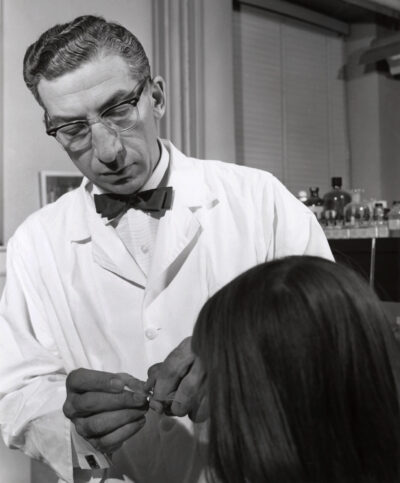 Harry Waisman
Harry Waisman -
1951 Enjoy a scoop, but don’t overdough it
Newly constructed Babcock Hall gives campus a new building and ice cream a new brand. On most campuses, ice cream is a treat. At the UW, it’s an outcome of our research, a product of our dairy plant, and constitutes the fruits (and nuts) of our labor. It also tastes heavenly. The Babcock Hall Dairy store — expanded, remodeled and reopened in 2022 — continues more than a century of making and selling ice cream, with sales on campus and beyond of 75,000 gallons a year. Babcock’s latest flavor, the vanilla-caramel-fudge concoction “Mnookie Dough,” celebrates the arrival of our newest chancellor, Jennifer L. Mnookin.
Babcock Hall Dairy Store, a must-stop on campus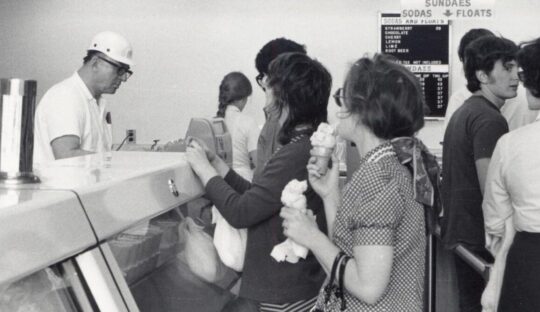
-
1953 The Horse (of course) wins the Heisman
Don’t get all defensive, someone must have told Alan Ameche — who played both defense and offense on the Badger football team. The “Iron Horse of Camp Randall” leads the UW to the Rose Bowl and becomes Wisconsin’s first Heisman Trophy winner. It would be 46 years before the next Badger, Ron Dayne, repeats the feat.
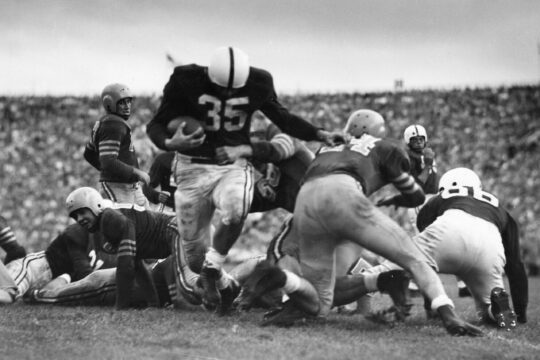 Alan Ameche (35) runs the ball against Marquette on Oct. 3, 1953.
Alan Ameche (35) runs the ball against Marquette on Oct. 3, 1953. -
1959 A tough pill to swallow? Try our floating coating.
It used to take a spoonful of sugar to help yucky-tasting medicine go down. Not so much these days, thanks to UW pharmacist Dale Wurster’s invention of a technique to quickly coat pills with a uniform shell while floating them on a jet of air — improving on a process that took days by doing the job in minutes.
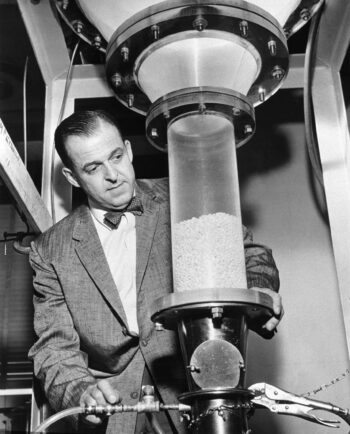 Dale Wurster with his machine for coating pharmaceutical pills
Dale Wurster with his machine for coating pharmaceutical pills -
1959 Say cheese: Satellite photos are something special from Wisconsin
NASA’s Explorer 7 launches the first U.S. weather experiment in space into orbit. An instrument designed by UW professors Vernor Suomi — considered the scientific father of the weather satellite — and Robert Parent measures Earth’s heat and returns climate observations that weren’t previously possible. It’s the dawn of a new age in weather science that changes how meteorologists create their forecasts — and makes possible those colorful images we see on our screens that warn us when darkening skies contain approaching storms.
Six Badgers in space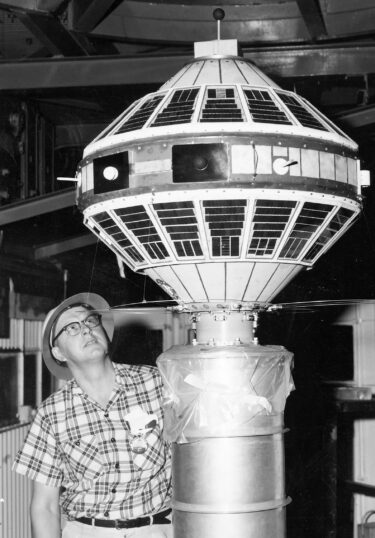 Verner Suomi with the Explorer satellite
Verner Suomi with the Explorer satellite -
1961 New outlook makes a world of difference
The UW goes where other universities hadn’t in making India the site of its first study-abroad offering. Most such programs had focused on major European nations, but Wisconsin’s intentionally promotes cultural competence in less familiar places — before gradually expanding to reach every continent with a country.
Advantages of a global education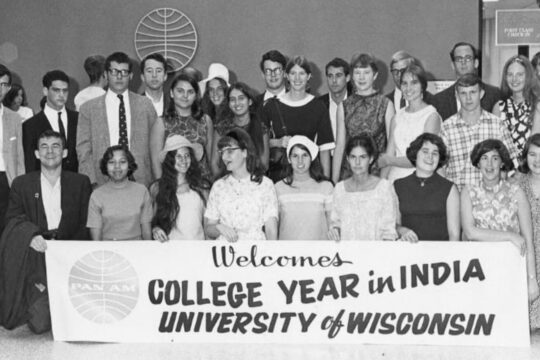 The second cohort of UW study-abroad participants as they depart for India in 1962
The second cohort of UW study-abroad participants as they depart for India in 1962 -
1962 King emphasizes need for activism
Dr. Martin Luther King Jr. calls for racial and social justice in an appearance at the Wisconsin Union Theater during a pivotal time in the civil rights movement. The visit comes shortly after his arrest for protesting segregation in Georgia, and just before his “I Have a Dream” speech at the March on Washington. King returns to campus in 1965, when he tells a Stock Pavilion audience to continue pressing for action despite recent successes like passage of the Civil Rights Act. “Freedom is one thing,” he said. “It is indivisible. You have it all, or you are not free.”
Dr. King’s speech at Stock Pavillon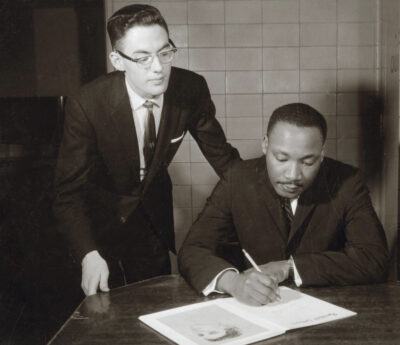 Martin Luther King Jr. (right) sits with Wisconsin Union Directorate committee member Jim Ehrman after a lecture at the Memorial Union on March 30, 1962.
Martin Luther King Jr. (right) sits with Wisconsin Union Directorate committee member Jim Ehrman after a lecture at the Memorial Union on March 30, 1962. -
1962 UW’s glass act molds a movement
Harvey Littleton’s studio furnace lights a fire under the art world by making glass a medium for more than windows and bottles. Since Littleton’s launch of the nation’s first college glassworking course, his students — including Dale Chihuly and hundreds more — have melted and molded glass into beautiful art.
Remembering Littleton and his impact on studio glass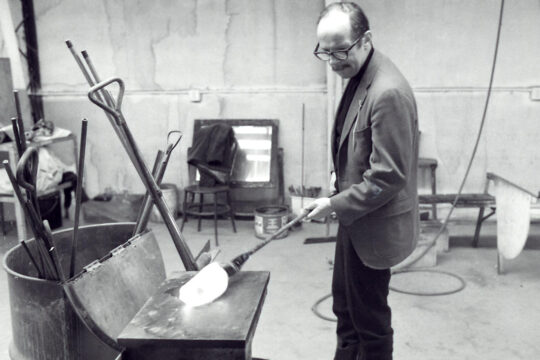 Harvey Littleton performs glassblowing in his studio.
Harvey Littleton performs glassblowing in his studio. -
1962 Promoting peace shows our corps values
A swampy tent camp is the training site for Wisconsin’s first contingent of Peace Corps volunteers — 41 young teachers headed for Africa’s Ivory Coast. Since those early days, the UW has sent more alumni into President John F. Kennedy’s international humanitarian service program than any other college.
UW continues as top producer of volunteers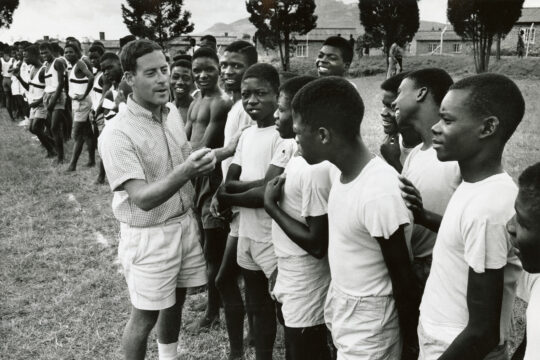 Peace Corp volunteer and UW alumnus Jim Friedlander works with youth in Malawi as a sports organizer in the late 1960s.
Peace Corp volunteer and UW alumnus Jim Friedlander works with youth in Malawi as a sports organizer in the late 1960s. -
1963 Earth is round. Maps are flat. This is a problem.
The Robinson Projection emerges as a more accurate way to minimize the distortion inherent in portraying a spherical world in 2D. UW professor Arthur Robinson develops the new view for Rand McNally, which still uses it in the paper maps that you really should keep in the glove compartment in case GPS goes out.
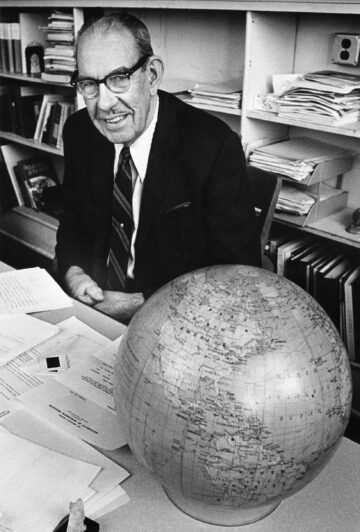 Arthur Robinson
Arthur Robinson
Student Cultural Centers
For decades, students from all backgrounds have built and found community in dedicated campus spaces.
-
1965 UW research leads to DDT ban
At a conference on the decline of peregrine falcon populations, UW ornithologist and teacher Joe Hickey goes out on a limb and asserts — backed by evidence he and his students developed — that chemical byproducts in common farm pesticides are killing birds. Soon, Wisconsin becomes the first state to ban DDT.
Hickey’s efforts to save the birds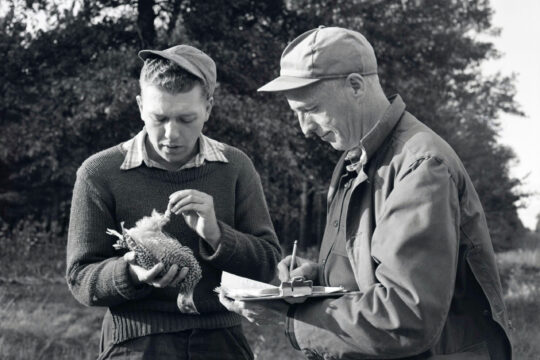 Joseph Hickey (right) and student Hillock J. Hosford examine a prairie chicken.
Joseph Hickey (right) and student Hillock J. Hosford examine a prairie chicken. -
1965 Doctor finds ways to protect us from rays
Dermatologist Derek Cripps joins the medical school faculty and becomes the BFF of SPF. His research on compounds that block harmful ultraviolet rays leads to nationwide “sun protection factor” ratings for sunscreen and other cosmetic products.
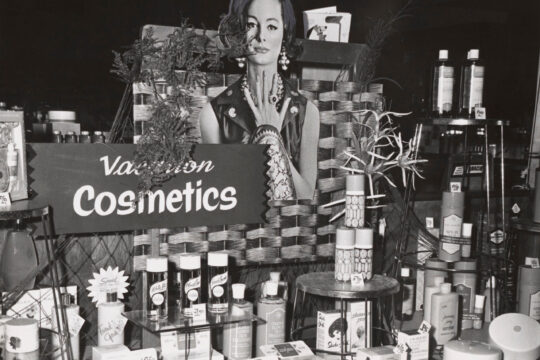
-
1966 NOW you know: Clarenbach a national women’s leader
Kathryn Clarenbach, a UW political science grad who returned to develop continuing education programs aimed at women, co-founds the National Organization for Women. An effective organizer less well-known than higher-profile contemporaries, Clarenbach is regarded as “the organization’s most trustworthy doer.”
Clarenbach shapes women’s movement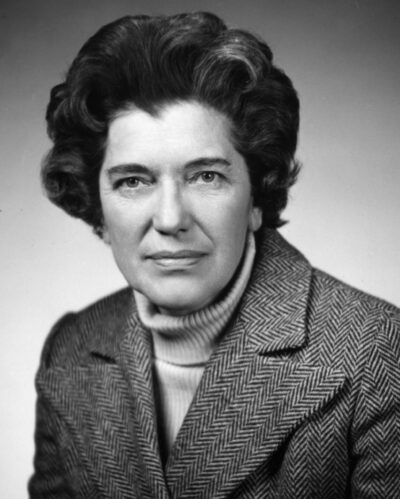 Kathryn Clarenbach
Kathryn Clarenbach -
1966 Wisconsin in the trenches of the War on Poverty
When President Lyndon B. Johnson puts the fight against poverty on a war footing, the UW is on the front lines with the establishment of the Institute for Research on Poverty — the first center of its kind. Federal policy follows a battle plan devised in part by UW economist Robert Lampman as a member of the Council of Economic Advisers. In the years since, IRP has remained in the forefront of studying and reforming state and national laws to advance the economic well-being of families with low incomes.
-
1966 Positive result: Basic science leads to COVID test
Future UW professor Thomas Brock makes a discovery that reaps massive benefits decades later during the COVID-19 pandemic. The microbiologist marvels at the heat resistance of bacteria that survive at near-boiling temperatures in a hot spring at Yellowstone National Park, and dedicates his career to understanding how this can be possible. The PCR tests used to screen people for coronavirus are based on Brock’s findings. His work exemplifies the sometimes underappreciated value of basic research. “Yellowstone really was a lark,” he said. “And what starts as intellectual enjoyment ... blossoms from there.”
Remembering Brock and his impact on extremophiles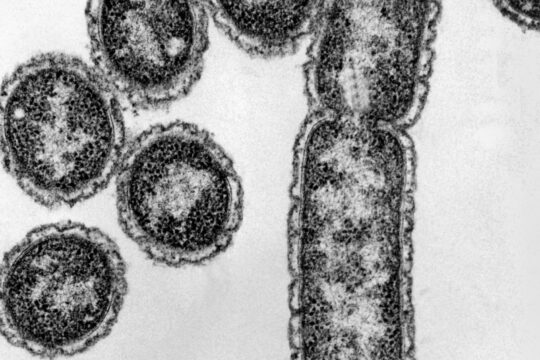 A microscopic image of the thermus aquaticus bacterium discovered by Thomas Brock
A microscopic image of the thermus aquaticus bacterium discovered by Thomas Brock
-
1968 A dairyland landmark in transplant medicine
A 22-month-old boy with an immunodeficiency disease receives the world’s first successful bone marrow transplant at UW Children’s Hospital. The operation builds on UW research into blood and tissue compatibility between donors and recipients, and brightens the prognosis for patients with leukemia and other disorders.
Bach paves the way for immunotherapies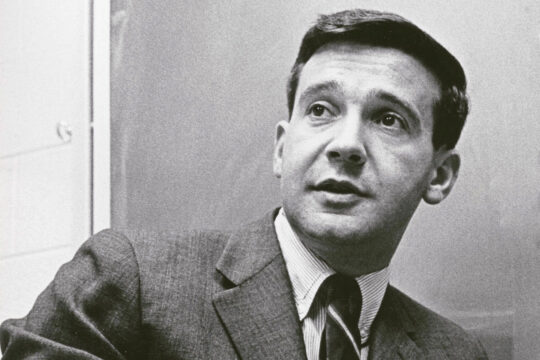 Fritz Bach, who performed the first successful bone marrow transplant
Fritz Bach, who performed the first successful bone marrow transplant -
1968 Lost in space? UW scopes out the starscape.
The first observatory to look at space from space — built at the UW’s Space Astronomy Laboratory — changes how we perceive celestial objects in the universe. The Orbiting Astronomical Observatory provides views from nearly 500 miles above Earth like nothing humans had ever seen, outlasts its intended life four times over, and sets the stage for the Hubble Space Telescope. Later, Wisconsin is the first university contributing a scientific instrument to the Hubble.
UW helps usher a new era of astronomy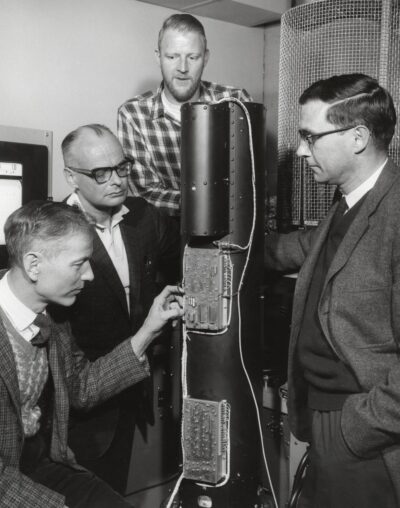 Development of the first Orbiting Astronomical Observatory (from left to right: Arthur D. Code, Theodore E. Houck, John McNall, Robert C. Bless)
Development of the first Orbiting Astronomical Observatory (from left to right: Arthur D. Code, Theodore E. Houck, John McNall, Robert C. Bless)
-
1969 Caps and gowns require bricks and mortar
The Humanities Building — notable for its uncompromising brutalist architecture and baffling labyrinthine layout — is the latest and most prominent example of an explosion in campus construction. The arrival of postwar Baby Boomers pushes enrollment over 40,000, creating an urgent need for new classrooms, offices, labs and residence halls to accommodate the UW’s rapidly growing student and faculty population. Though appreciated by fans of its controversial style, Humanities — leaky, crumbling and widely unloved — has not aged well and is slated to be replaced by something more modern and ... humane.
How the Humanities Building went wrong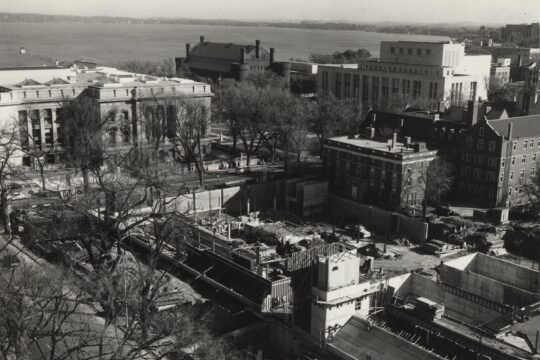 The Humanities Building under construction in 1966
The Humanities Building under construction in 1966 -
1970 Everything we knew was wrong: Doing a 180 on DNA
Howard Temin, who would later have a campus path named after him, takes the research road less traveled to reverse the prevailing view of molecular biology. The UW oncology professor’s lonely lab quest identifies the “reverse transcriptase enzyme,” which leads to the surprising finding that viruses transmit genetic information in exactly the opposite way scientists had previously believed. It’s a major step toward the discovery of the AIDS virus, and it earns Temin a Nobel Prize.
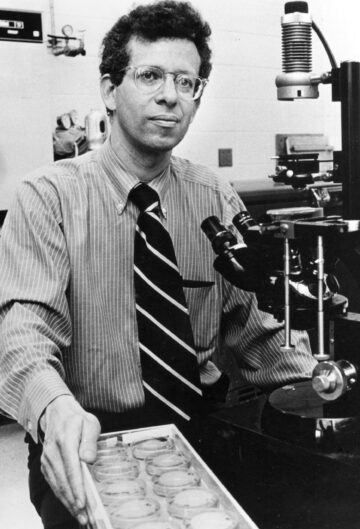 Howard Temin
Howard Temin -
1970 A day in the life … of life
UW biochemist Har Gobind Khorana manipulates the chemical components of life itself by creating a synthetic gene in a test tube for the first time. It’s considered a scientific milestone on a par with splitting the atom, building on Khorana’s earlier Nobel-winning work synthesizing DNA.
Google Doodle celebrates Har Gobind Khorana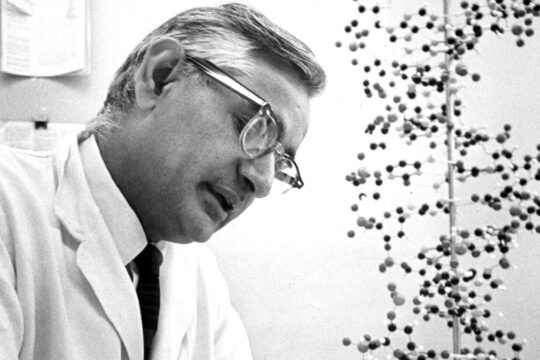 Har Gobind Khorana
Har Gobind Khorana -
1970 Campus bombing claims a life, jolts a movement
Campus is rocked, and the antiwar movement roiled, by an explosion at Sterling Hall that kills a researcher, damages property, and gives protestors pause. Four conspirators targeting the building’s Army Math Research Center with a homemade bomb largely miss their intended mark, but cause widespread damage and claim the life of 33-year-old Robert Fassnacht — a postdoc, father of three, and himself an opponent of U.S. military involvement in Vietnam. Three of the bombers are eventually captured, convicted and sentenced to prison, and nationwide soul-searching ensues over how far is too far to go in protesting the war.
Alumni perspectives on the Sterling Hall bombing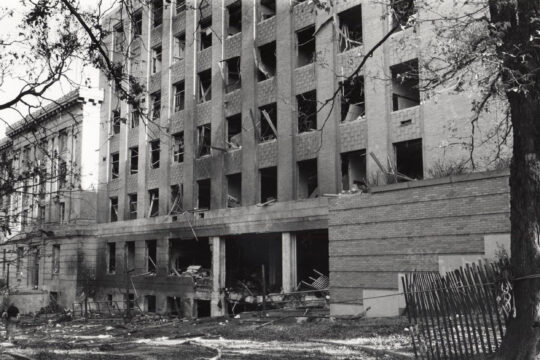 Sterling Hall after the bombing
Sterling Hall after the bombing -
1978 Pail and Shovel Party makes campus its sandbox
The serious mood on campus pivots to silliness as the Pail and Shovel Party sweeps student government elections. In the course of leading the Wisconsin Student Association as president and vice president, Jim Mallon and Leon Varjian pull off two of the most memorable pranks in UW history: the Statue of Liberty, poking through and peeking from the ice after supposedly being lowered into frozen Lake Mendota; and a flock of flamingos (or at least, the pink plastic lawn ornament variety) on Bascom Hill. A few dozen students who are not amused and demand a refund for this waste of their fees are issued checks for 10 cents.
An era of campus pranks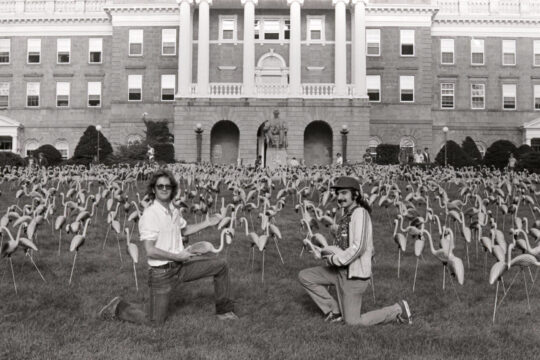 Pail and Shovel Party president Jim Mallon (left) and vice president Leon Varjian install pink flamingos on Bascom Hill in 1979.
Pail and Shovel Party president Jim Mallon (left) and vice president Leon Varjian install pink flamingos on Bascom Hill in 1979. -
1978 Football gets a fifth quarter
While mathematically impossible and competitively irrelevant, the “Fifth Quarter” is added to UW football games as the marching band initiates its win-or-lose postgame program after each home contest at Camp Randall. Originally intended as walking-out music while fans left the stadium, the half-hour show soon has people lingering for the band’s antics, audience participation activities, and traditional favorites such as “On, Wisconsin!,” “Varsity,” and “You’ve Said It All” (the Bud song). Hey, they’d be stuck in stadium traffic for a half hour anyway, so why not?
Badger Band’s most beloved tradition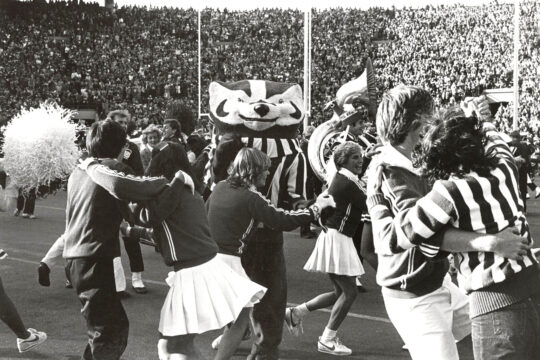 A “Fifth Quarter” celebration in 1980
A “Fifth Quarter” celebration in 1980
1980–2023UW–Madison’s modern era of impact
-
1985 Search to stop colds stopped cold
Hopes for a vaccine to avoid the common cold take a hit when UW virologist Roland Rueckert sees a cold virus in 3D and concludes: It ain’t gonna happen. Antibodies could never get in the tight spaces where vaccines would work. He does manage to pinpoint where drugs might help stop the sniffles after they start.
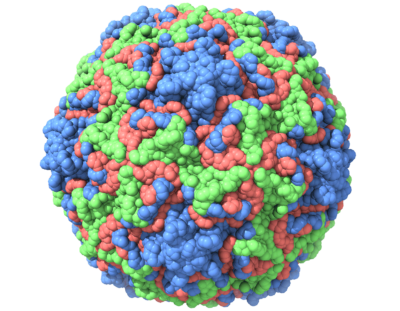
-
1985 Regional language guide dares to be different
We dare you: Go up to a Madison hot dog stand and order a half-smoke. If you had read the UW’s Dictionary of American Regional English (DARE), you’d know you can get away with that in New Jersey, but here, frankly, no. UW word wonks in the land of the bubbler spend decades compiling the compendium of quirky regional language, publishing the first volume in 1985.
DARE comes to an end, but lives on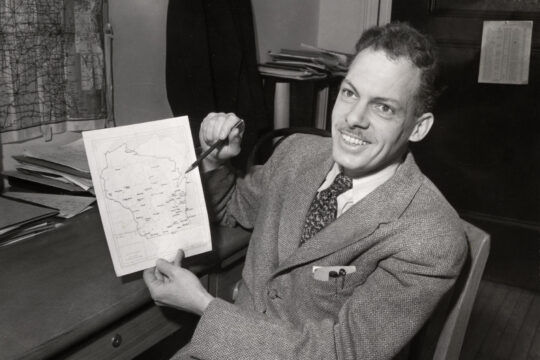 Professor Frederic G. Cassidy, founder of the Dictionary of American Regional English
Professor Frederic G. Cassidy, founder of the Dictionary of American Regional English -
1985 Looking at books, their lens focuses on diversity
The Cooperative Children’s Book Center begins indexing newly published American books to track diversity in children’s literature. The center, affiliated with the UW School of Education, becomes the nation’s most authoritative source on the subject for schoolteachers and librarians. The data CCBC compiles fuel a critical review of whether the books kids are reading accurately reflect our multiracial, multicultural society. The center highlights 250 books emphasizing diversity each year in its annual publication, “Choices.”
A champion for representation in literature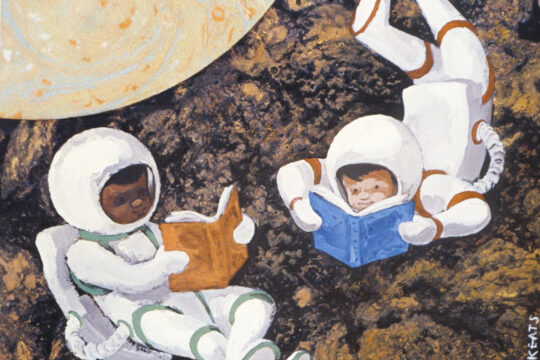
-
1987 A problem in search of a solution
UW surgeon Folkert Belzer and biochemist James Southard invent the Wisconsin Solution — a chemical solution for preserving transplant donor organs, and a logistical solution to the problem of keeping tissue viable over long distances. Chancellor Jennifer L. Mnookin can personally vouch for it. Before arriving at the UW, she donated a kidney to her father while she was in Los Angeles and he was in Boston. As it has thousands of times, the Wisconsin Solution enabled the successful cross-country transplant. Researchers here continue to improve the solution to help alleviate a shortage of transplantable organs.
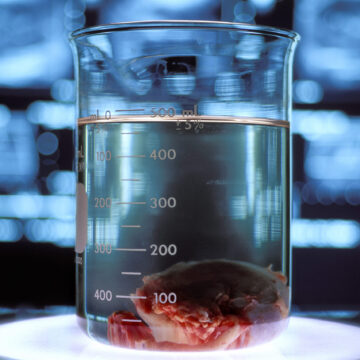 The UW Solution helps to safely store a canine kidney for transplant.
The UW Solution helps to safely store a canine kidney for transplant. -
1990 When Bucky met Barry: The Alvarez era begins
Athletic director Pat Richter taps Barry Alvarez as head football coach, and UW Athletics has never been the same. Chancellor Donna Shalala had hired Richter in 1989 to address the athletics department’s $2 million deficit and struggling teams. When Alvarez arrives a year later, the trio usher in a new era of student-athlete success. First, on the gridiron, Alvarez turns around a lackluster program and leads it to three Big Ten titles and three Rose Bowl victories — becoming the winningest Badger coach of all time in the process. Then, with Alvarez continuing as athletic director after his retirement from the football sideline, Wisconsin men’s and women’s teams win 16 national titles and 74 conference or tournament crowns across multiple sports.
Barry Alvarez’s favorite Badger moments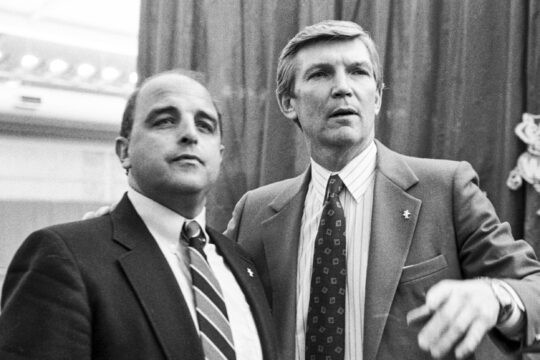 Athletic Director Pat Richter (right) introduces Barry Alvarez as the new Badger football coach.
Athletic Director Pat Richter (right) introduces Barry Alvarez as the new Badger football coach. -
1994 Roses are red — at last
The Badger football team, winless in three previous Rose Bowl appearances, defeats UCLA for its first triumph in Pasadena. Students, alumni and fans of all ages are overjoyed that their alma mater is gaining respect on the field, and UW games are a hot ticket after years of unsuccessful seasons. Five more Rose Bowl trips follow with back-to-back wins in 1999 and 2000, which no Big Ten team had ever done.
Photos from UW Rose Bowl games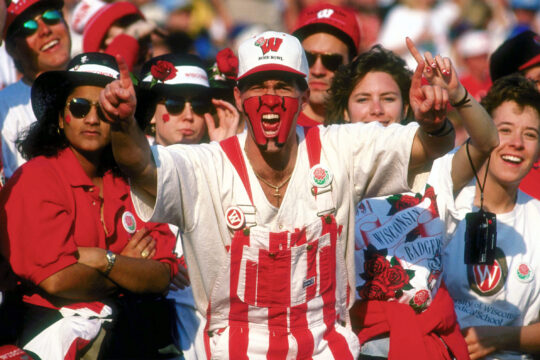 Badger fans cheer on Wisconsin against UCLA at the 1994 Rose Bowl Game.
Badger fans cheer on Wisconsin against UCLA at the 1994 Rose Bowl Game. -
1996 UW grows the first food crop in space
On board a NASA shuttle flight, a UW experiment with potatoes marks the first time food is successfully grown in space. The shuttle spuds prove that plants can thrive in a zero-gravity environment, which is promising news as mission planners try to figure out how to feed astronauts on future long-term flights.
Researchers unlock secrets to growing food in space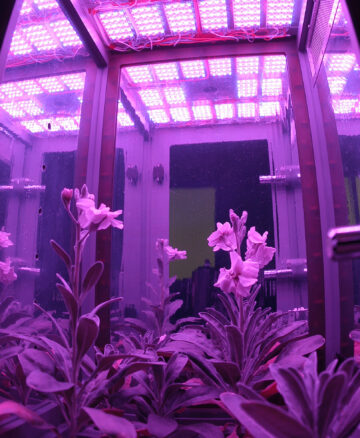 The Wisconsin Center for Space Automation and Robotics, with space-bound plants growing inside a climate-controlled chamber
The Wisconsin Center for Space Automation and Robotics, with space-bound plants growing inside a climate-controlled chamber -
1997 A decade of research cracks the genetic code
Geneticist Fred Blattner unlocks some of life’s deepest secrets by sequencing the genome of the E. coli bacterium. Understanding E. coli’s genetic building blocks gives us the most complete look yet at how life begins. UW also helps sequence the genomes of potatoes, corn, mice, ants and 99 cold viruses.
Profile of Fred Blattner, emeritus professor of genetics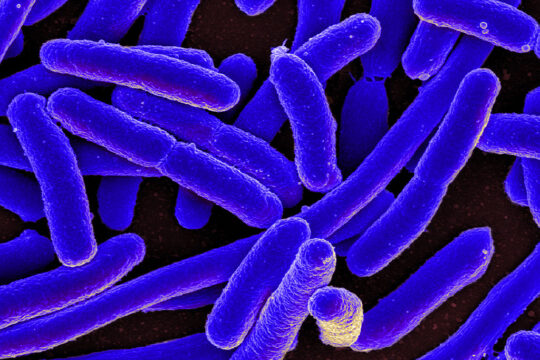 Micrograph of E. coli (image courtesy of NIAID)
Micrograph of E. coli (image courtesy of NIAID) -
1998 A new home for basketball and hockey
The UW opens its state-of-the-art sports arena on Jan. 17 as Badger men’s basketball defeats Northwestern, 56-33. The 17,000-seat Kohl Center — named after U.S. senator and UW alumnus Herb Kohl, who gave its $25 million lead gift — becomes home to the UW’s basketball and hockey programs. (Women’s hockey moves to the adjacent LaBahn Arena in 2012.) With a unique design featuring two overhanging balconies, all fans are close to the action. And they see a lot of success: since moving to the Kohl Center, men’s basketball and hockey have combined for 33 NCAA Tournament appearances, five Final/Frozen Fours, and a national championship. The Kohl Center is also an entertainment destination, hosting the likes of Elton John, Bob Dylan and Shania Twain, as well as the UW’s annual Varsity Band Concert.
The greatest games in Kohl Center history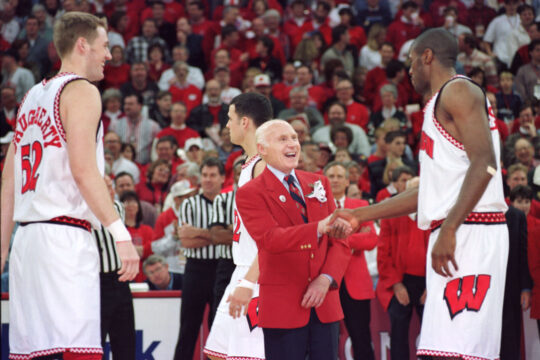 Herb Kohl (center) greets players at the opening of the Kohl Center.
Herb Kohl (center) greets players at the opening of the Kohl Center.
-
2003 An odyssey begins, and lives are changed
The Odyssey Project opens a door to higher education that had been closed for many when it begins offering UW humanities classes to adults facing economic barriers. Over the next two decades, the Odyssey Project serves more than 500 participants — about one-quarter of whom go on to earn a college degree, professional credential or technical certificate. It now includes six programs, having grown to add opportunities for children, incarcerated adults, students age 60 and older and military veterans.
Pathway to college for nontraditional students -
2009 A snow day turned snowball fight
When the chancellor cancels classes for the first time in 20 years after a December blizzard, students make the most of it. An epic snowball fight draws 4,000 combatants to Bascom Hill, and a tradition is born. The Battle for Bascom becomes an annual event, weather permitting (and in Wisconsin, it usually does).
Four snowiest days on campus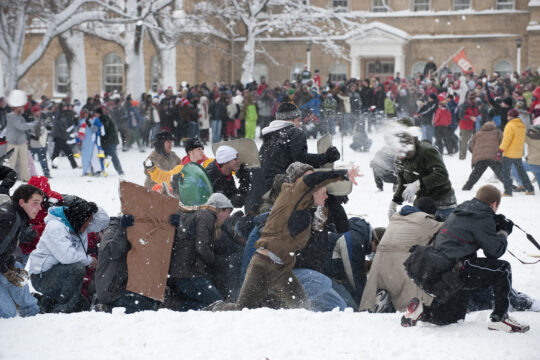 The inaugural Battle for Bascom snowball fight
The inaugural Battle for Bascom snowball fight -
2010 Most POTUS bypass us. But two came twice.
Barack Obama becomes the first sitting U.S. president to visit the UW campus in 70 years. He returns two years later during his reelection campaign. The first presidential campus visit was by Rutherford Hayes, who “mingled ... with the young lady students” in 1878. Herbert Hoover spoke at the Field House in 1932, and Harry Truman was here twice — first at the Stock Pavilion and then at the Field House, where his “peace address” (despite entering the Korean War less than a month later) was broadcast nationwide.
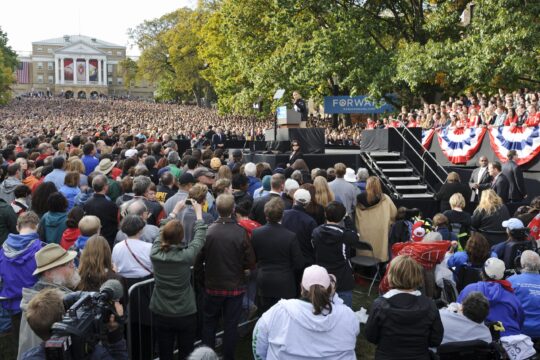 President Barack Obama addresses a crowd of 30,000 on Bascom Hill on Oct. 4, 2012.
President Barack Obama addresses a crowd of 30,000 on Bascom Hill on Oct. 4, 2012. -
2012 Proving the ‘God particle’
UW scientists play a prominent role when evidence consistent with (and later confirmed to be) the Higgs boson is discovered. The tiny particle, which for years had eluded researchers who believed but could not prove it existed, helps untangle some vexing mysteries about the physical properties of the universe.
Profile of Sau Lan Wu, lead researcher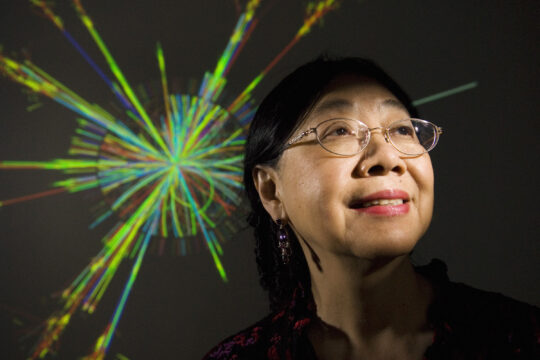 Physics professor Sau Lan Wu, who helped to discover the Higgs boson
Physics professor Sau Lan Wu, who helped to discover the Higgs boson -
2013 The human family tree sprouts another limb
An international team of paleoanthropologists, whose leaders include the UW’s John Hawks, finds evidence of a new branch on the human family tree: Homo naledi. Hundreds of well-preserved bone and tooth fossils from a barely accessible South African cave indicate a species with small heads, small brains, hunched shoulders and powerful hands. “We now have the biggest discovery in Africa for hominins,” Hawks said. While much different from its modern descendants, H. naledi had this distinctive characteristic: a smile more human than apelike.
Discovery of Homo naledi -
2015 Any way you look at it, ‘All Ways’ moves UW forward
The All Ways Forward capital campaign gets underway, ultimately surpassing its original $3.2 billion goal by raising more than $4 billion over six years to maintain the UW’s status among the world’s top universities. Alumni John and Tashia Morgridge offer $125 million in matching funds, which more than doubles the UW’s number of fully funded chairs and professorships. The Wisconsin Foundation and Alumni Association invests some of the campaign’s proceeds in the university’s endowment to provide income for future uses, but much of the money raised is already supporting scholarships, research projects, buildings and faculty positions throughout the university.
How the campaign shapes UW student experience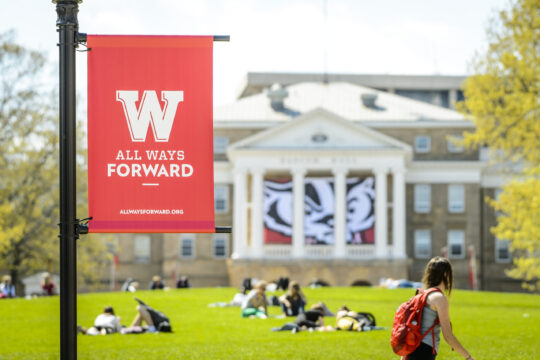
-
2017 UW is first in PhDs
For the first time, UW–Madison ranks No. 1 in the nation for the number of doctoral degrees conferred in a year: 844 in 2017. The UW’s PhDs go on to work in higher education as faculty, researchers, administrators and staff, as well as in elementary and secondary education, business, government and nonprofits.
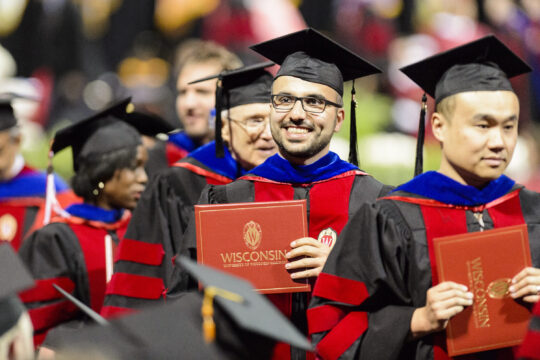
-
2018 Four affordable years, full-time on Bucky’s dime
Chancellor Rebecca Blank announces free — yes, free — tuition for Wisconsin resident students from families whose household income is less than the state average. Called Bucky’s Tuition Promise, the program increases access to a UW degree by providing four-year, full-ride scholarships covering tuition and fees for qualifying students. It’s so easy, a student doesn’t even have to apply; anyone filling out the standard federal financial aid form is automatically considered. Private gifts and other institutional resources cover the entire cost without using taxpayer dollars.
Bucky’s Tuition Promise transforms lives
-
2019 ‘Shared future’ plaque addresses difficult truths
A new marker on Bascom Hill acknowledges the campus as the ancestral home of the Ho-Chunk Nation before it was forced out by the U.S. government. “This history of colonization informs our shared future of collaboration and innovation,” the plaque reads, recognizing the sovereignty of Wisconsin’s Native Nations.
Steps toward a shared and better future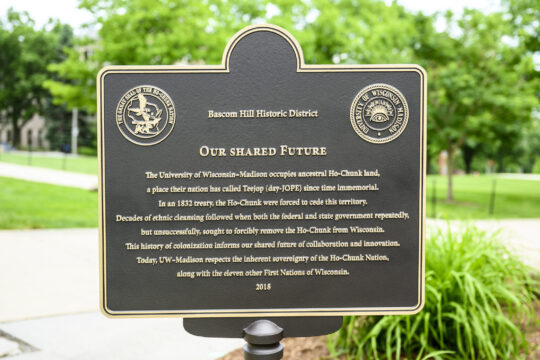
-
2020 Coronavirus strikes, UW steps up
Research by David O’Connor, Thomas Friedrich and other scientists at the UW helps develop vaccines against COVID-19. It’s only the latest example of the UW’s leadership in fighting global infectious diseases, which has also brought advances in understanding and treating HIV, Ebola, dengue, Zika and other viruses.
UW scientists zero in on COVID-19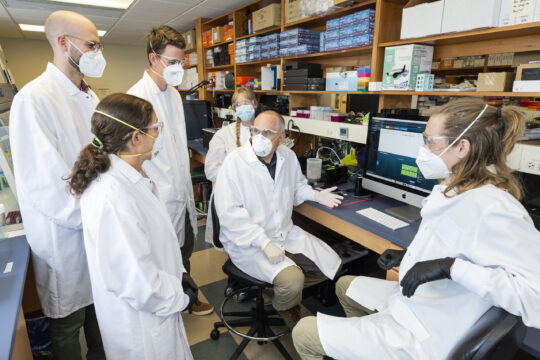 David O’Connor (center) with (clockwise from front left) colleagues Shelby O’Connor, Mitchell Ramuta, Max Bobholz, Olivia Harwood and William Vuyk
David O’Connor (center) with (clockwise from front left) colleagues Shelby O’Connor, Mitchell Ramuta, Max Bobholz, Olivia Harwood and William Vuyk -
2021 Volleyball team nets first national championship
Wisconsin claims its first NCAA volleyball title after a back-and-forth, five-set win over Nebraska in the national championship finals at Columbus, Ohio. Senior Dana Rettke, a record-setting five-time first team All-American, is recognized as volleyball’s best when she is named National Player of the Year.
Volleyball championship photos and coverage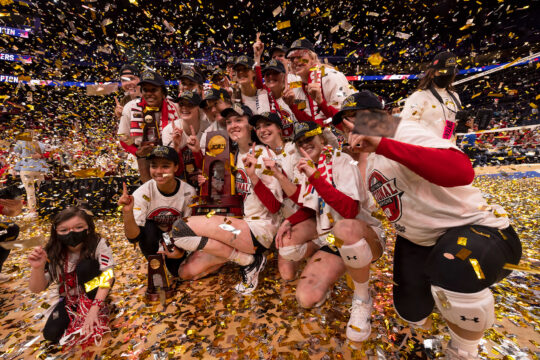 The volleyball team celebrates its championship with fans at the Nationwide Arena in Columbus, Ohio.
The volleyball team celebrates its championship with fans at the Nationwide Arena in Columbus, Ohio. -
2021 UW offers degree in novel psychedelic treatments
The School of Pharmacy enrolls the first students in its new Psychoactive Pharmaceutical Investigation master’s degree program — the only one of its kind in the U.S. The online program’s graduates will fill a need in the health care workforce in the growing therapeutic field of psychedelics, entheogens, cannabinoids and other psychoactive substances. Its multidisciplinary curriculum connects themes of health, science, equity and the humanities as they relate to the use of novel psychoactive compounds as potential treatments for anxiety, depression, PTSD and other psychiatric illnesses.
UW leads the way in psychedelic medicine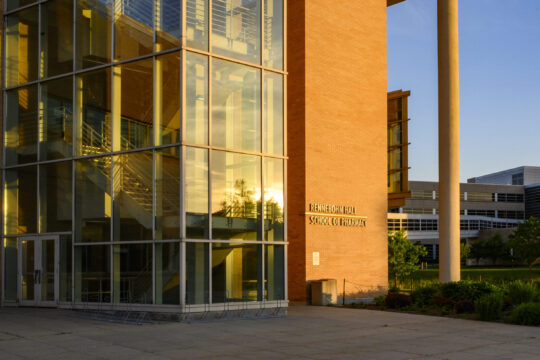
Notable Alumni
Spanning every field in the arts and sciences, Badgers have made significant contributions to our everyday lives.
-
2023 A promise to Wisconsin
On the heels of Bucky’s Tuition Promise comes Bucky’s Pell Pathway — a pledge to meet the four-year financial need of new first-year Wisconsin resident students who qualify for federal Pell Grants, which expand access to college for families with low incomes. The guarantee covers not just tuition and fees, but also housing, meals, books and most other educational expenses. Transfer students receive two years of funding.
UW creates access and opportunity for Wisconsin residents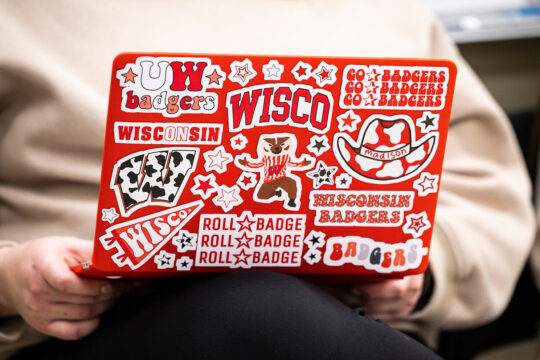
-
2023 Rink rank: Most women’s titles ever
The Wisconsin women’s hockey team sets a new national record by winning more titles than any other school — its seventh — in a win over Ohio State in the NCAA championship round in Duluth, Minn. The UW was previously tied with Minnesota for the most titles, when the record stood at six.
Hockey championship highlights